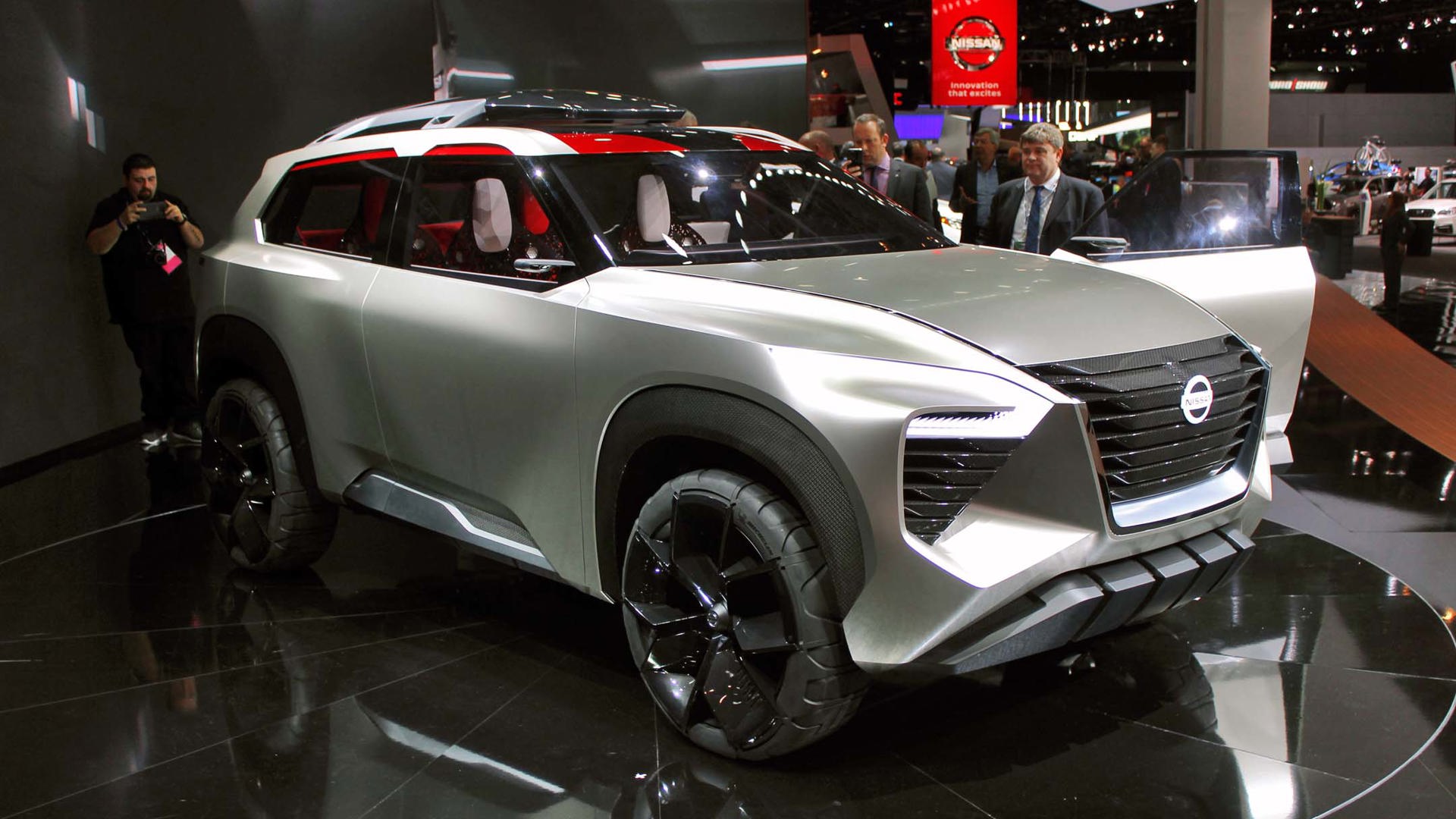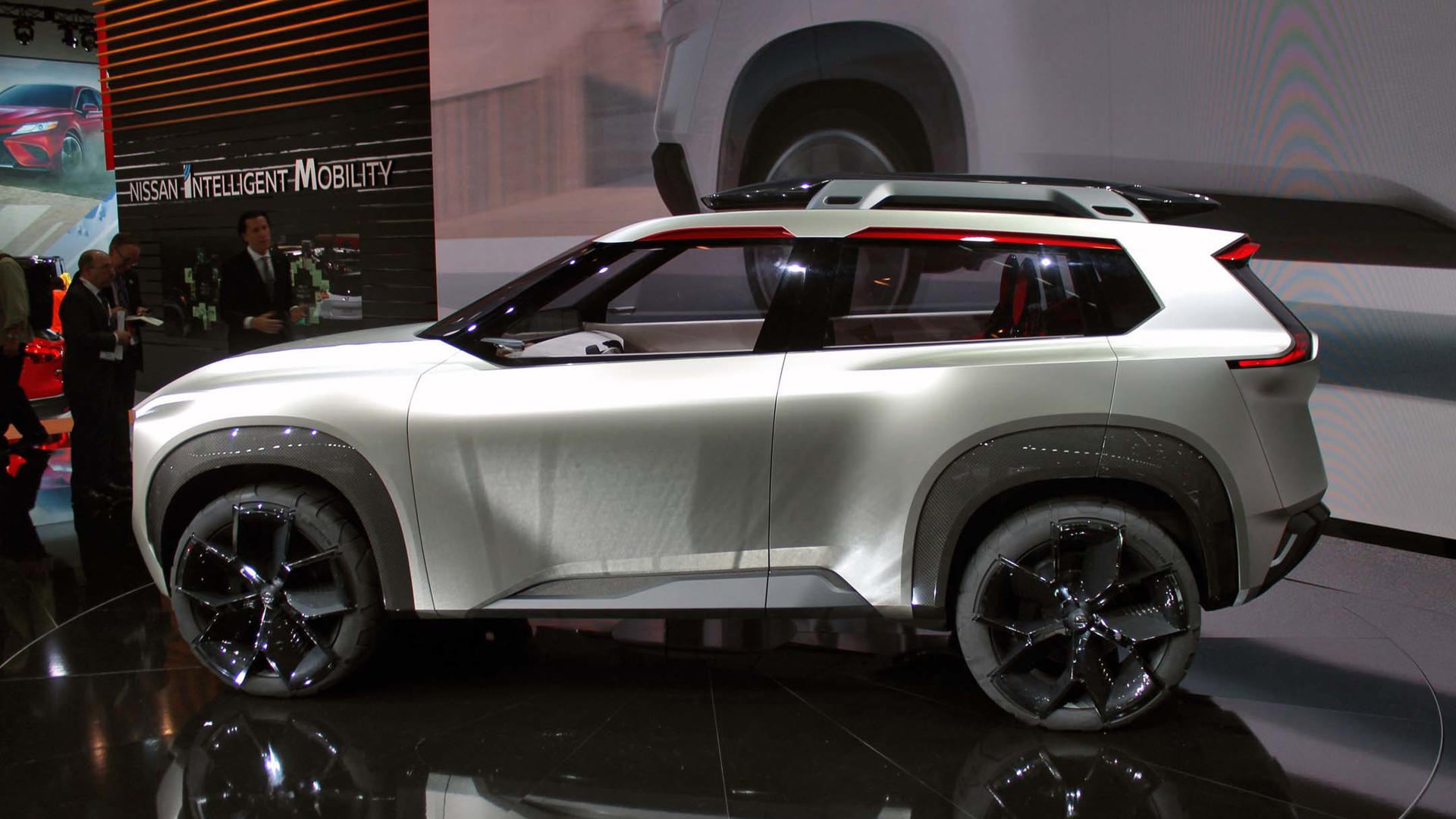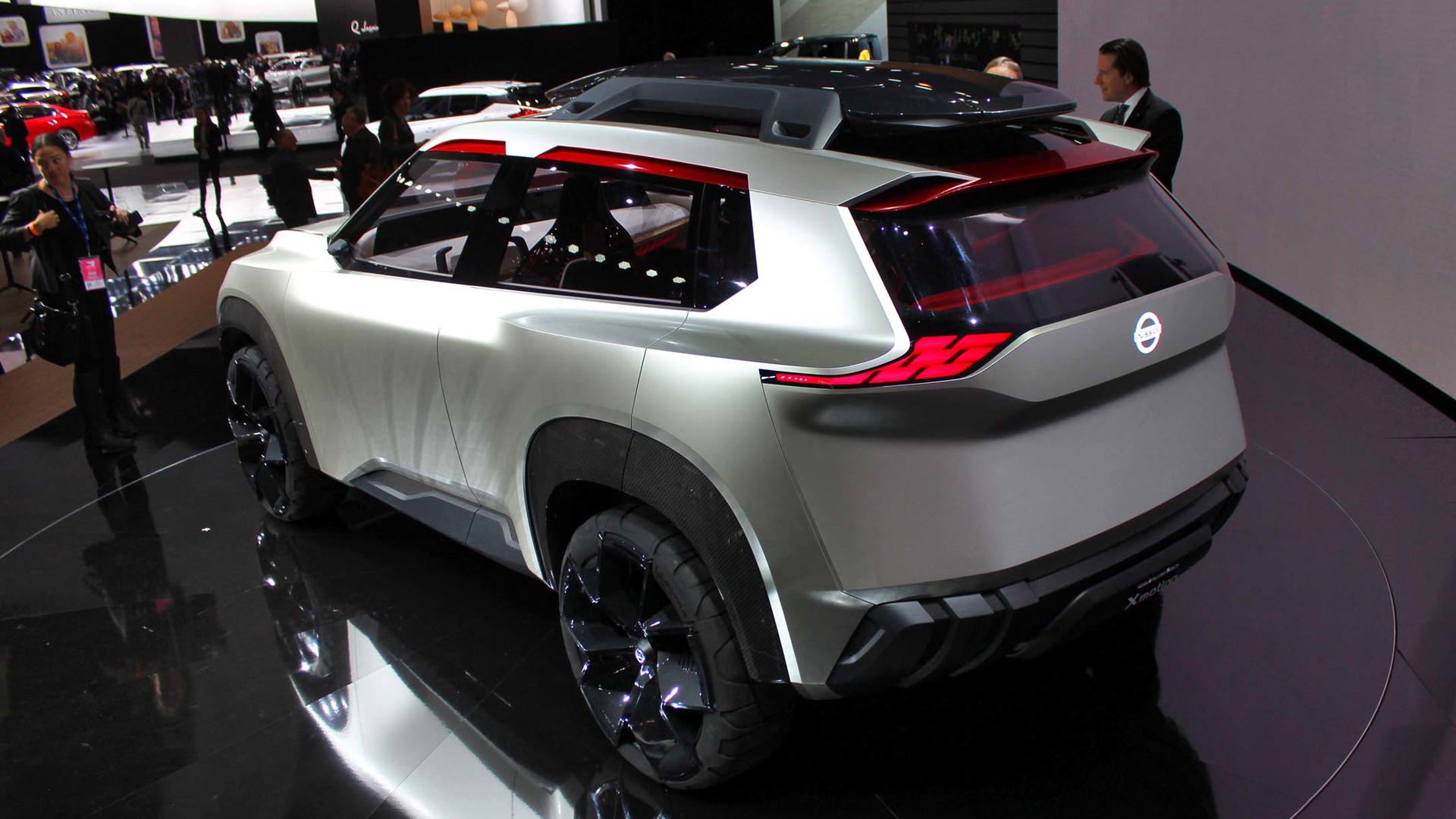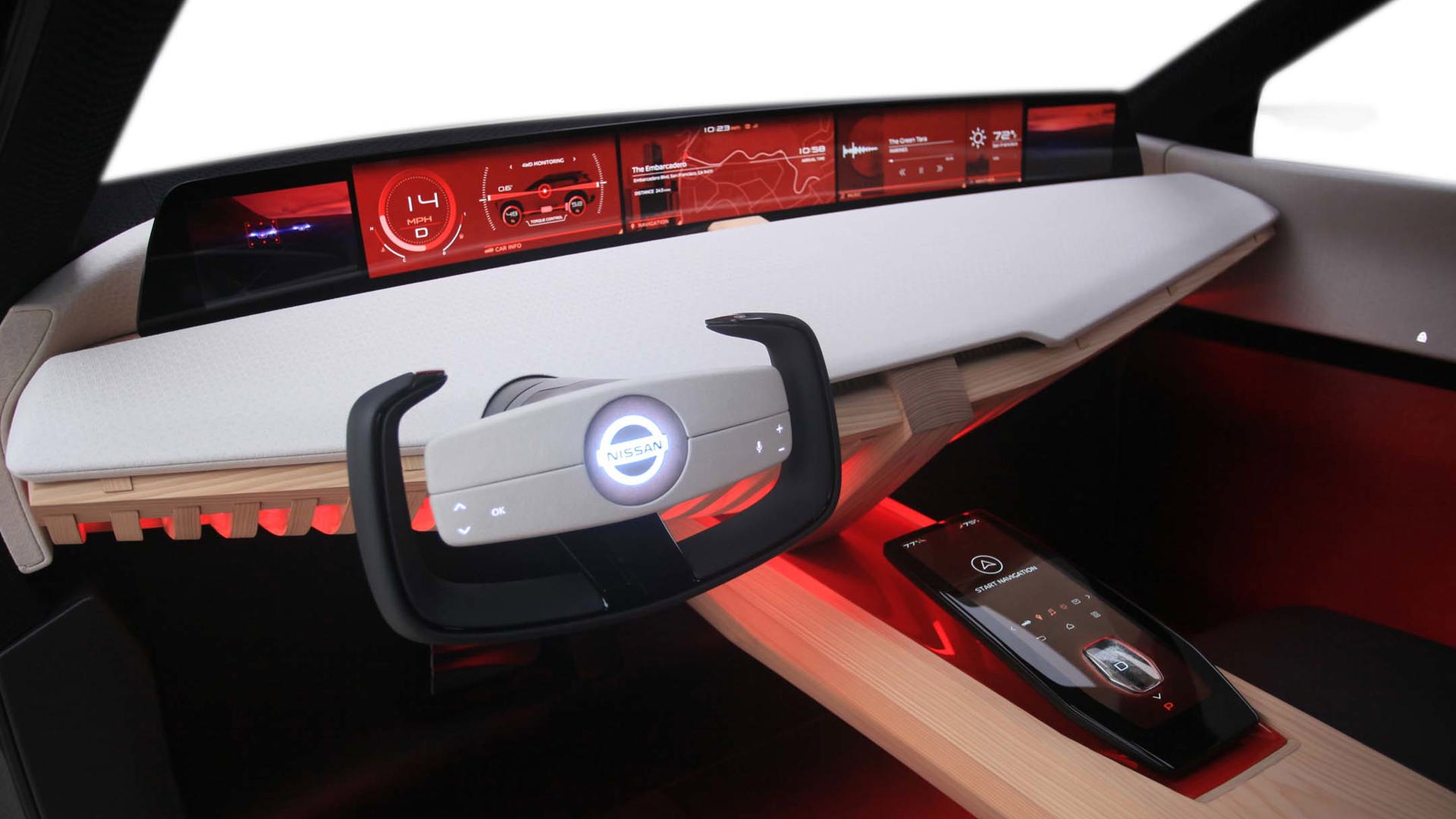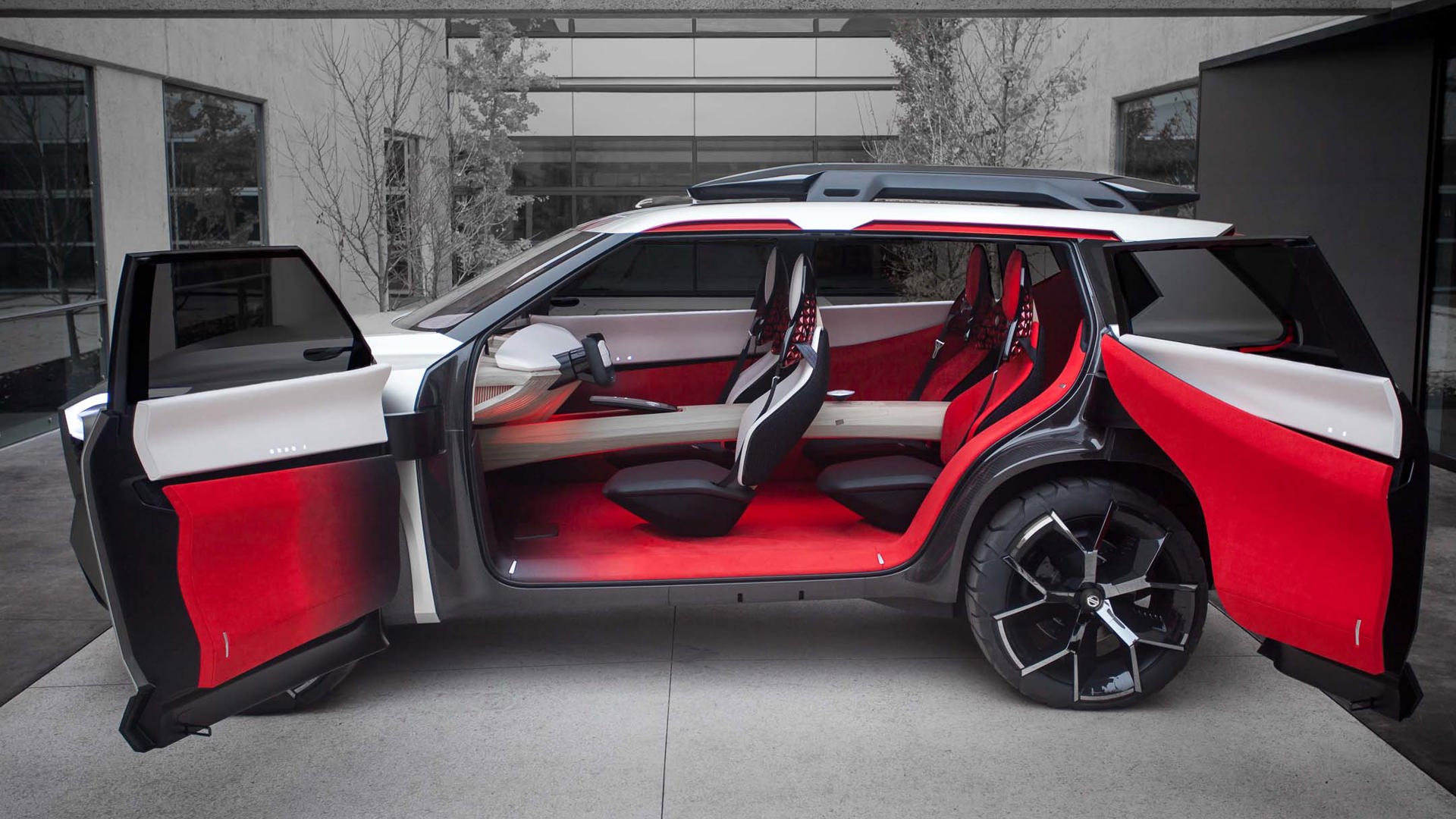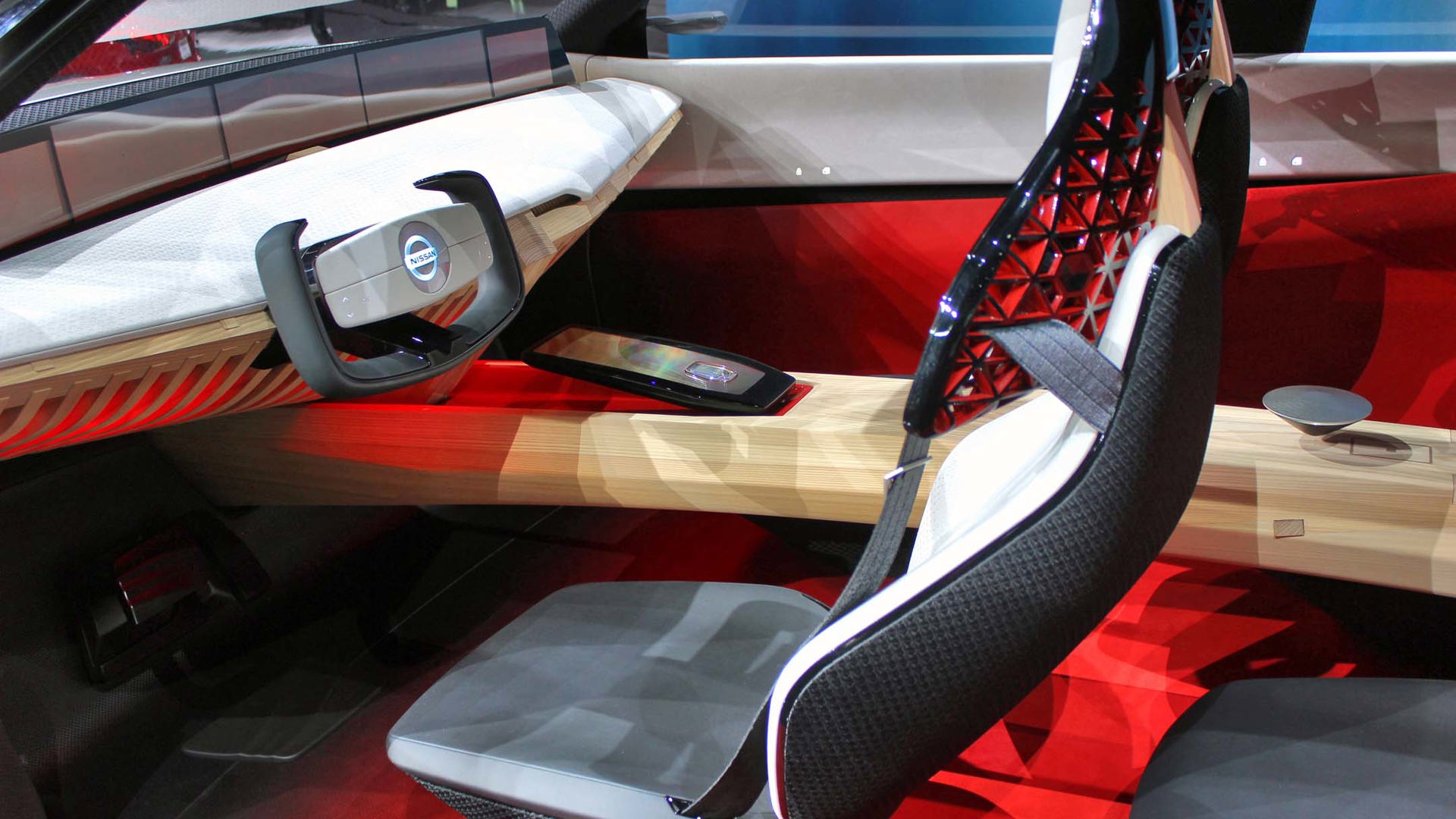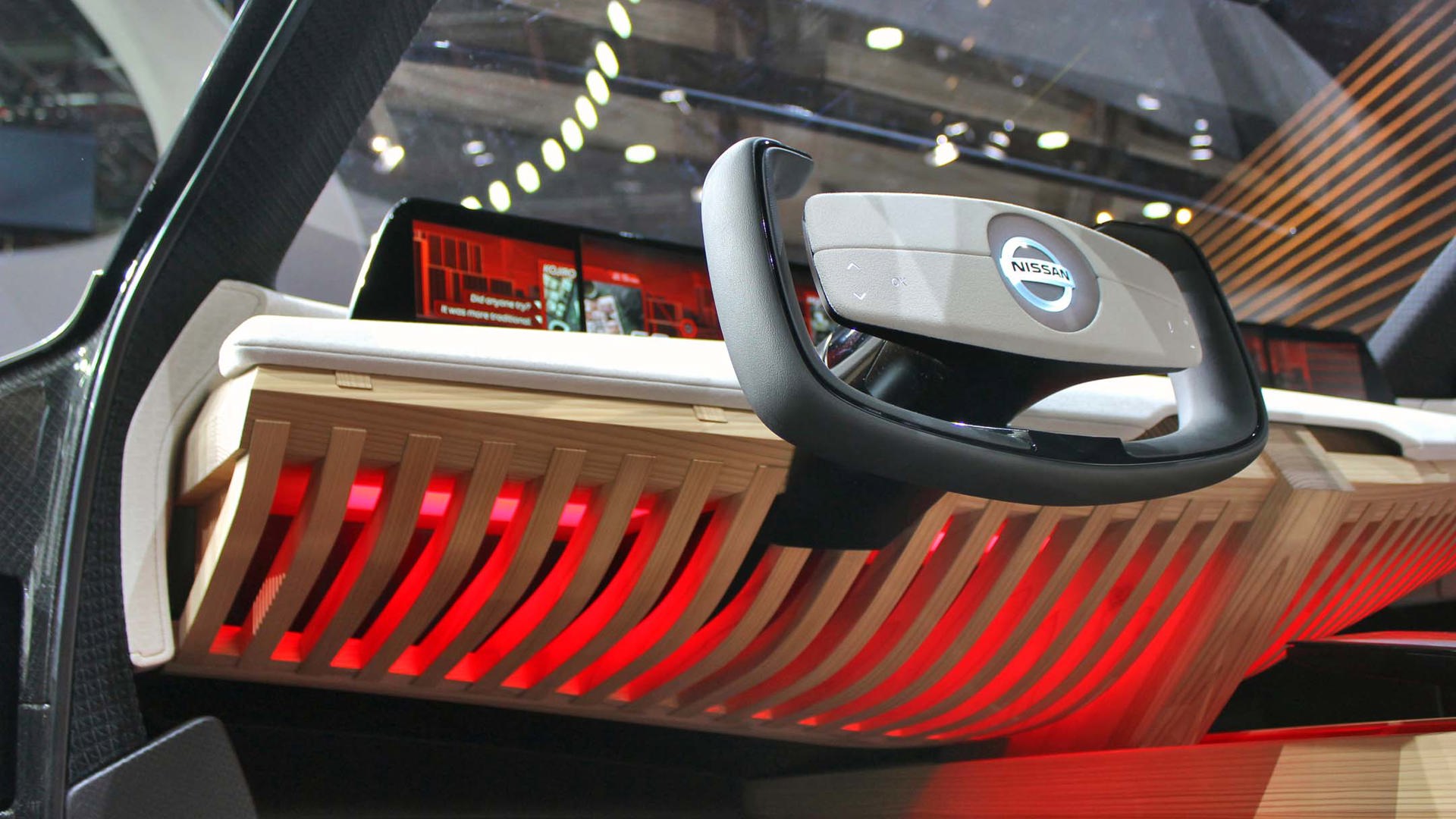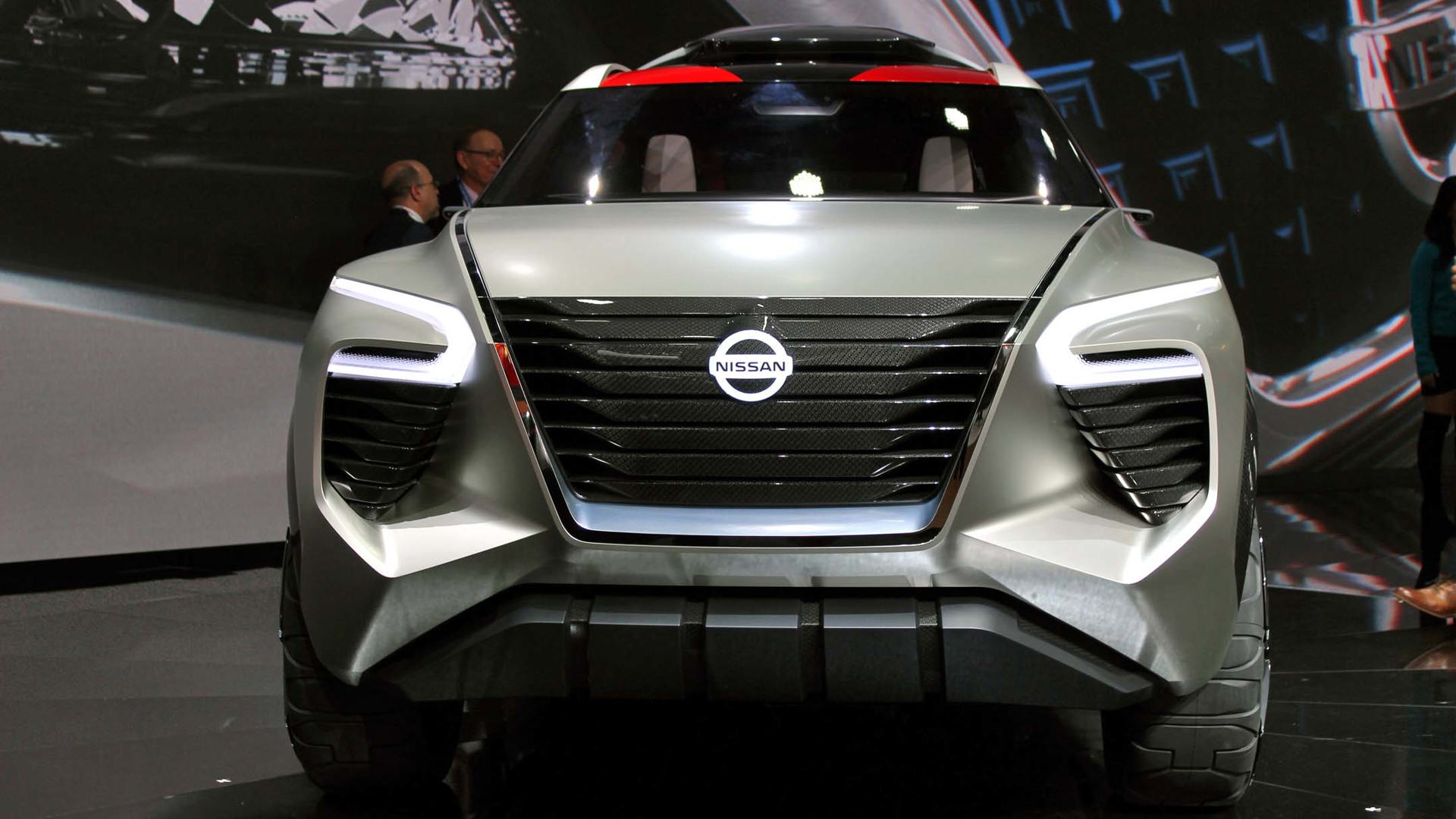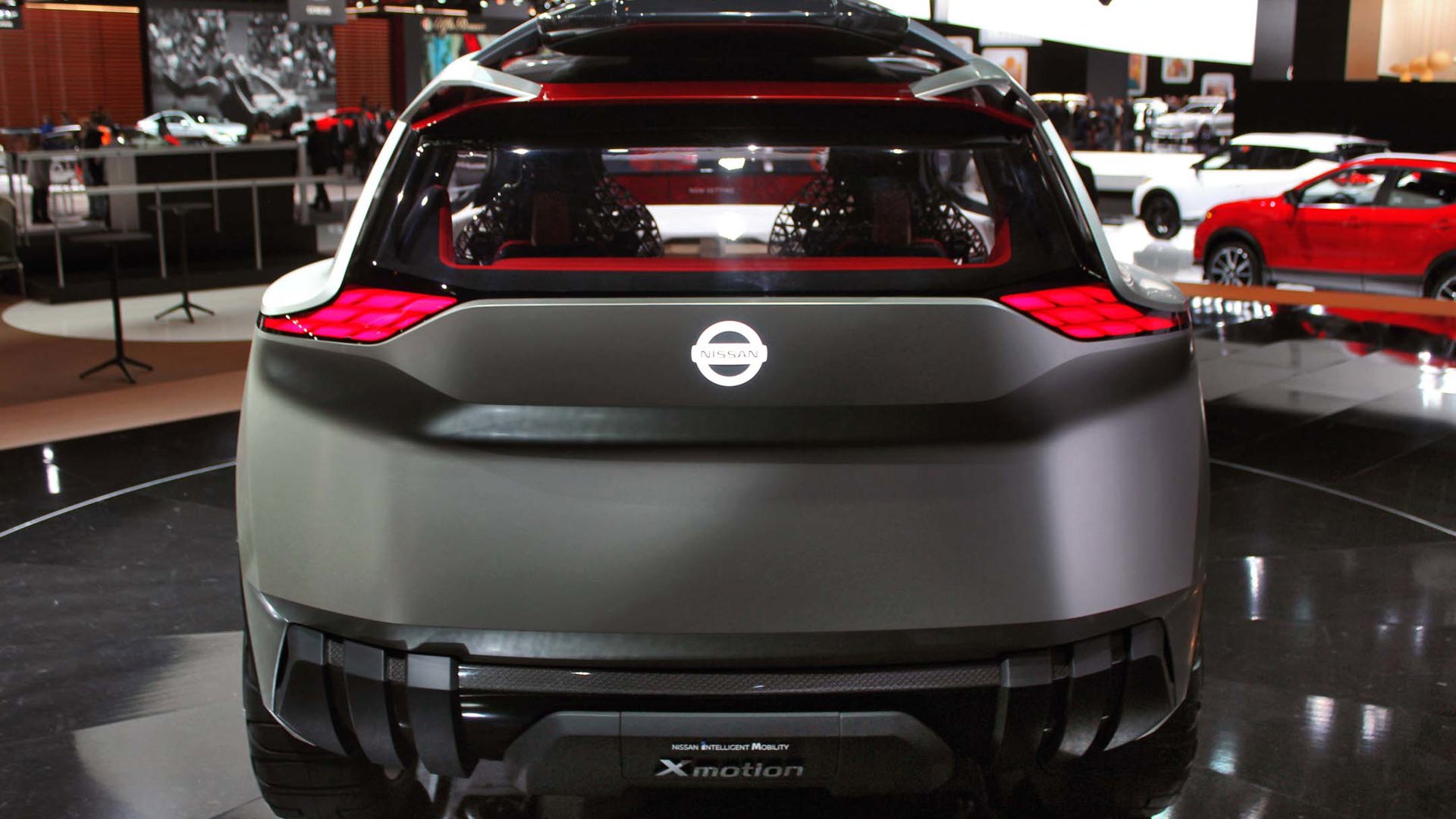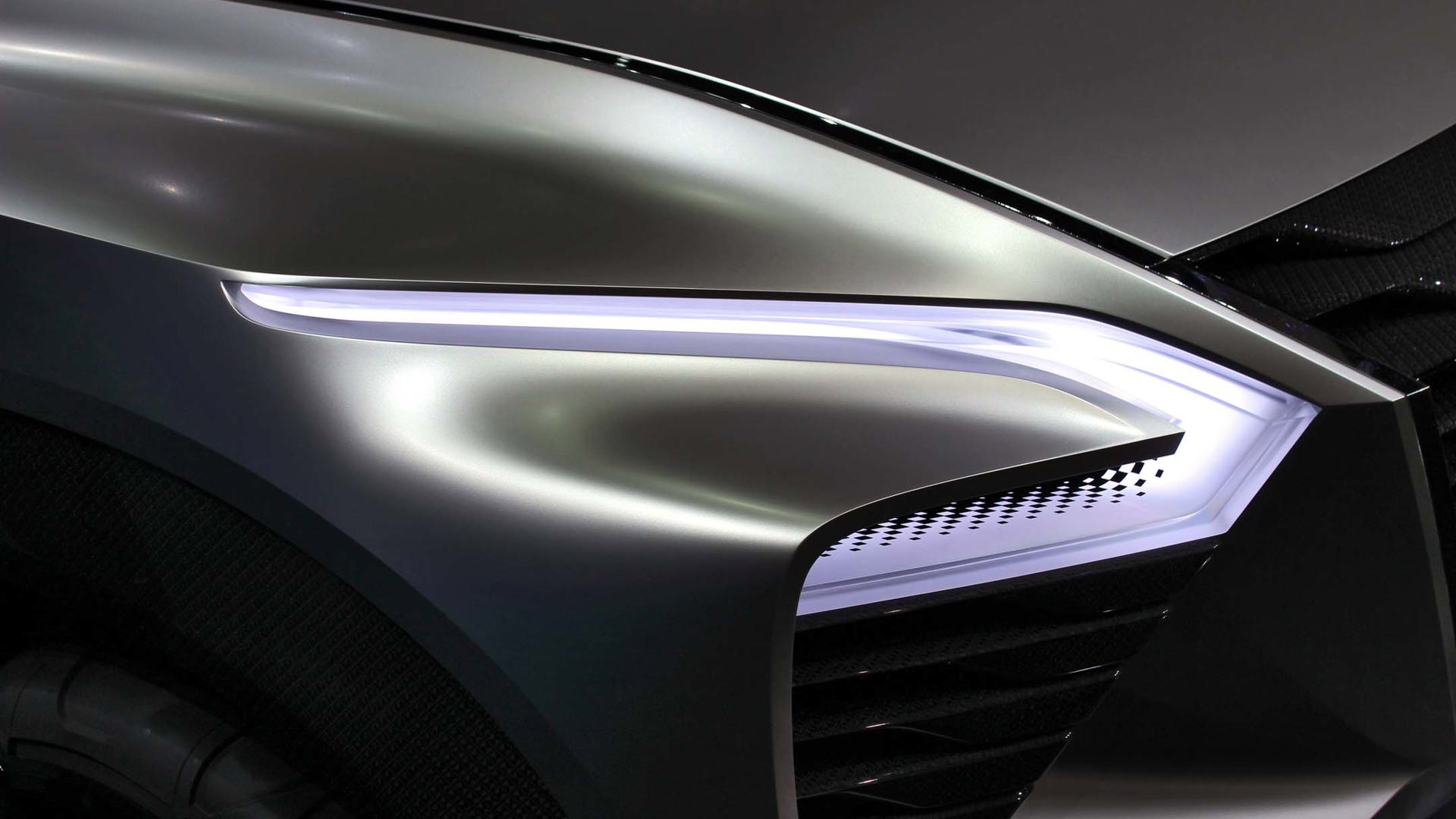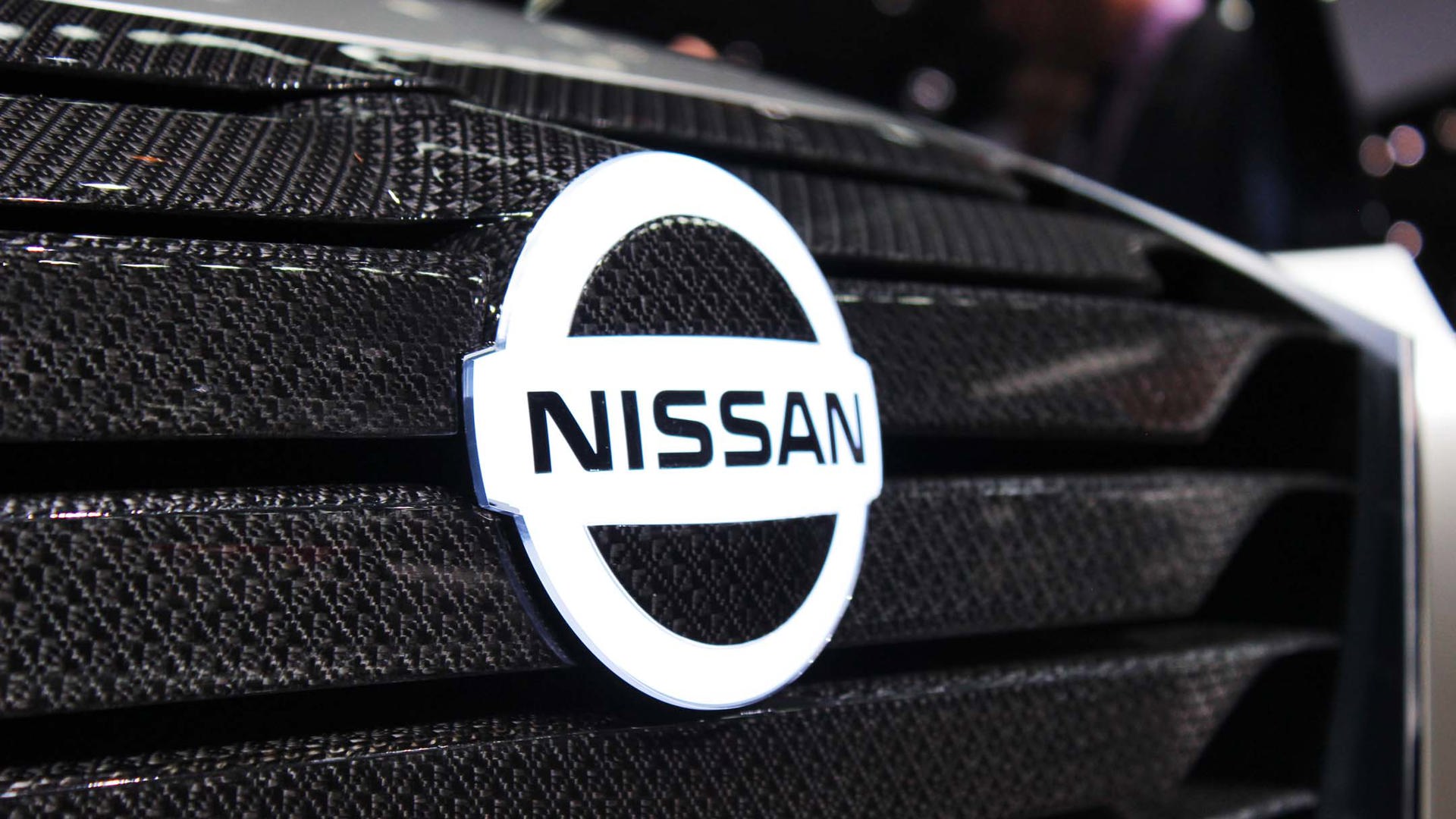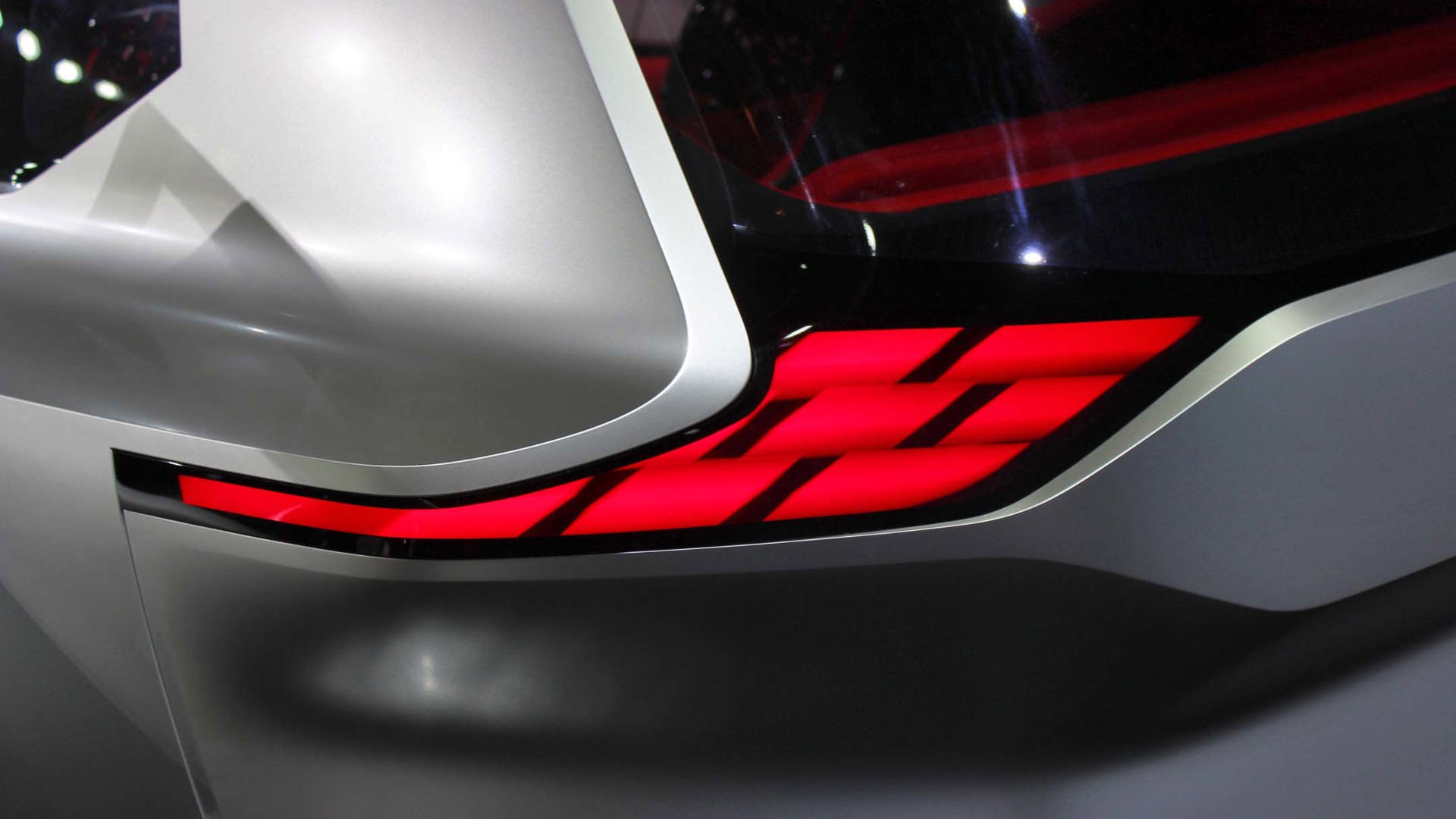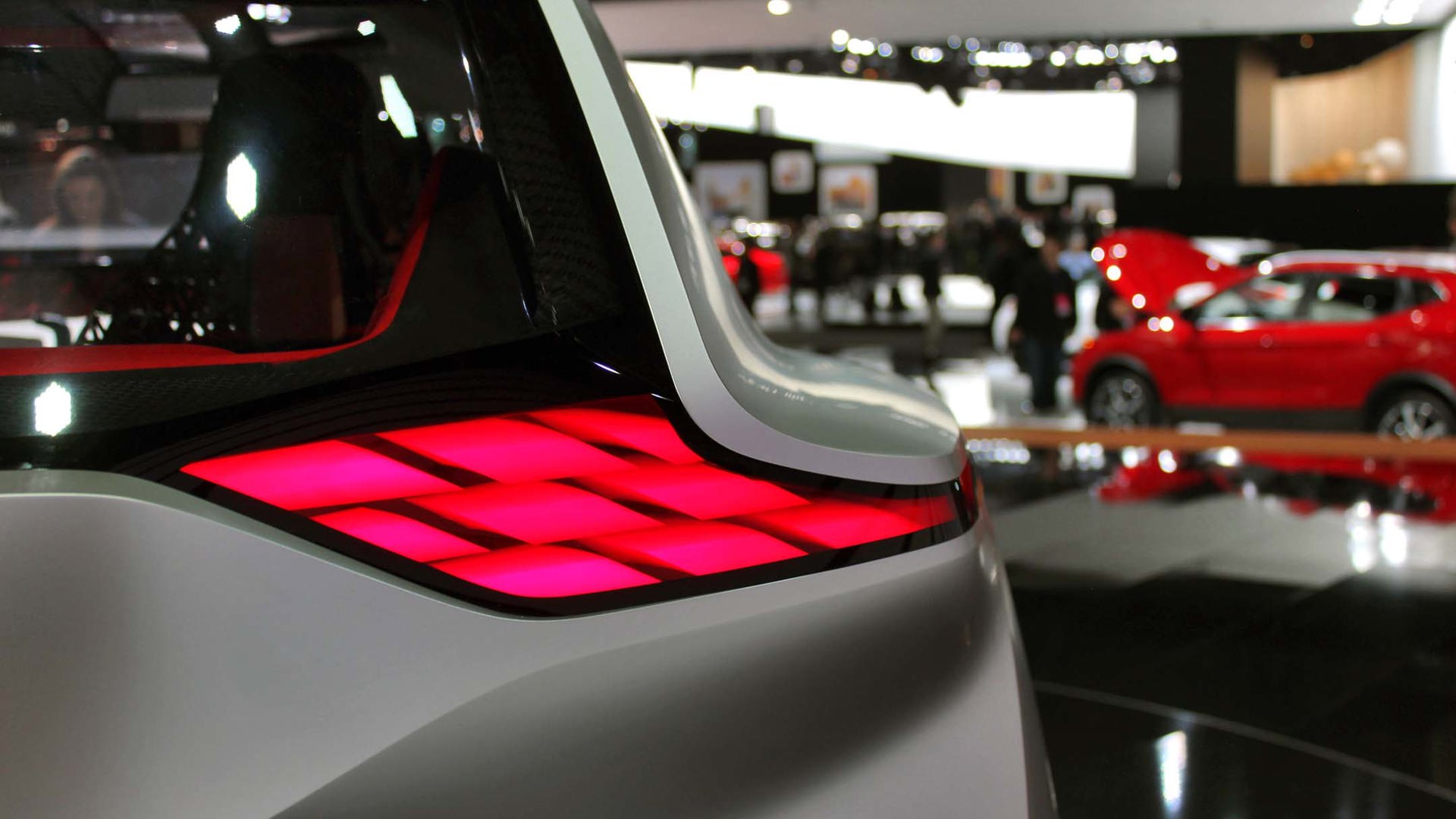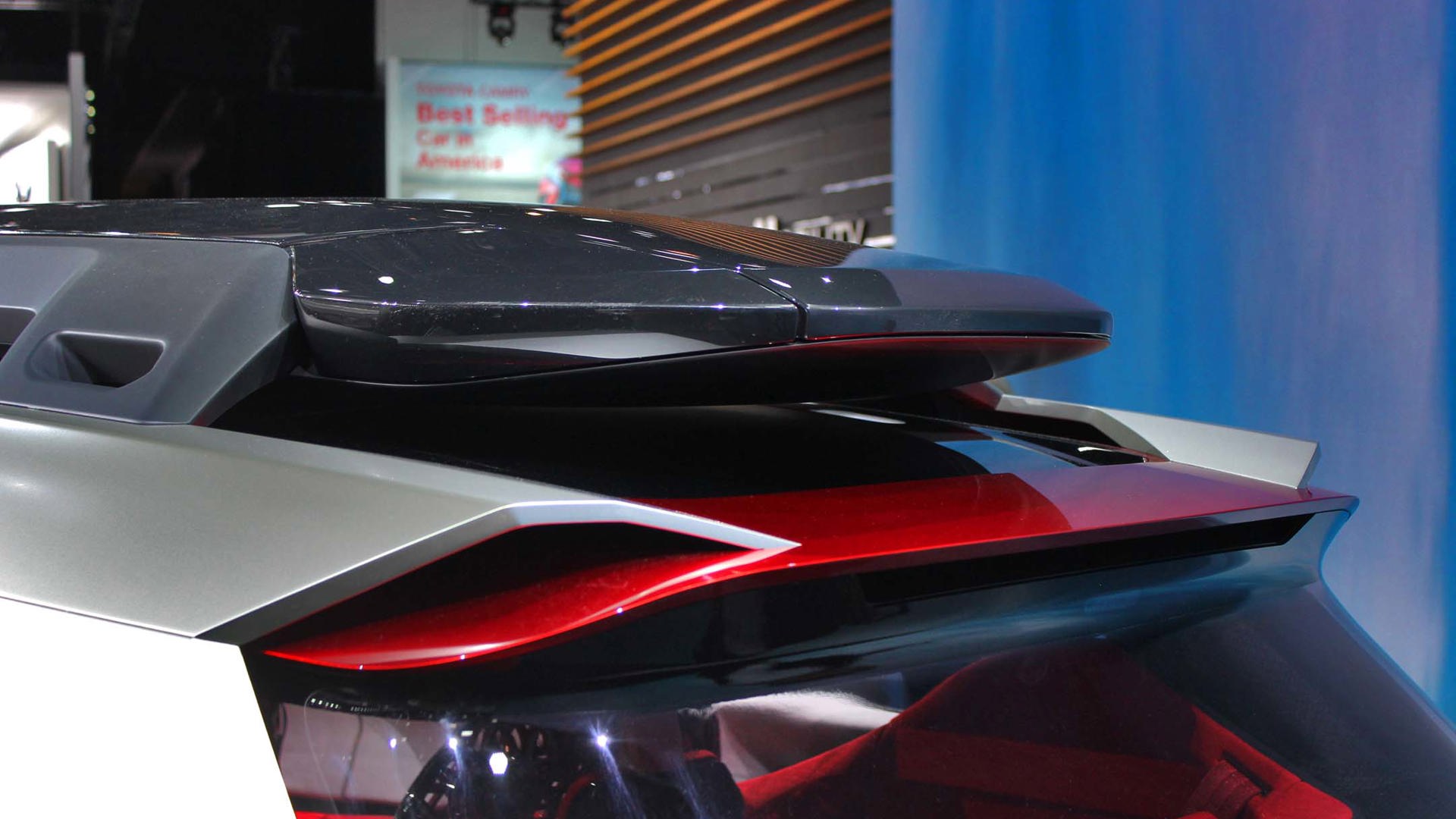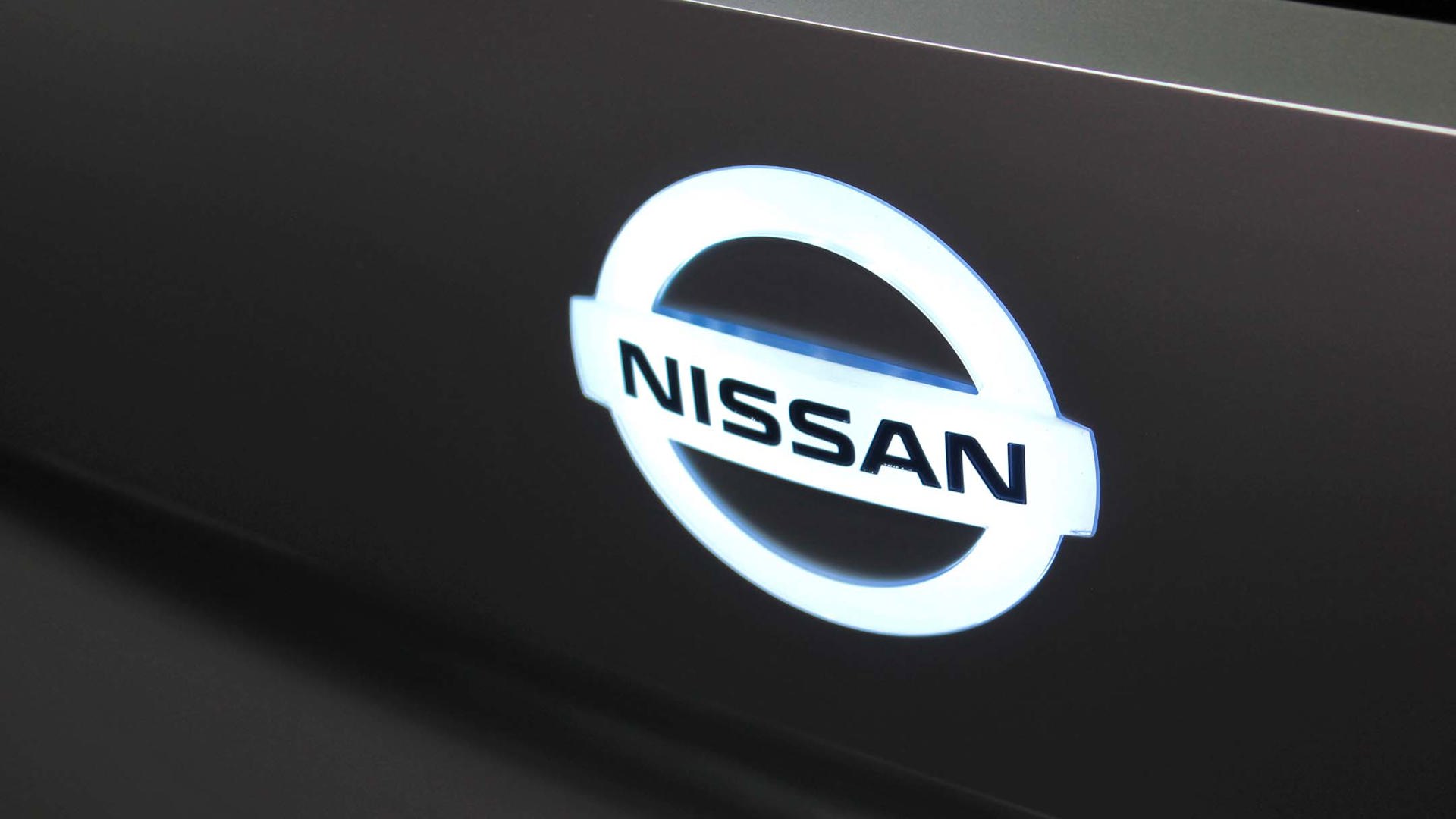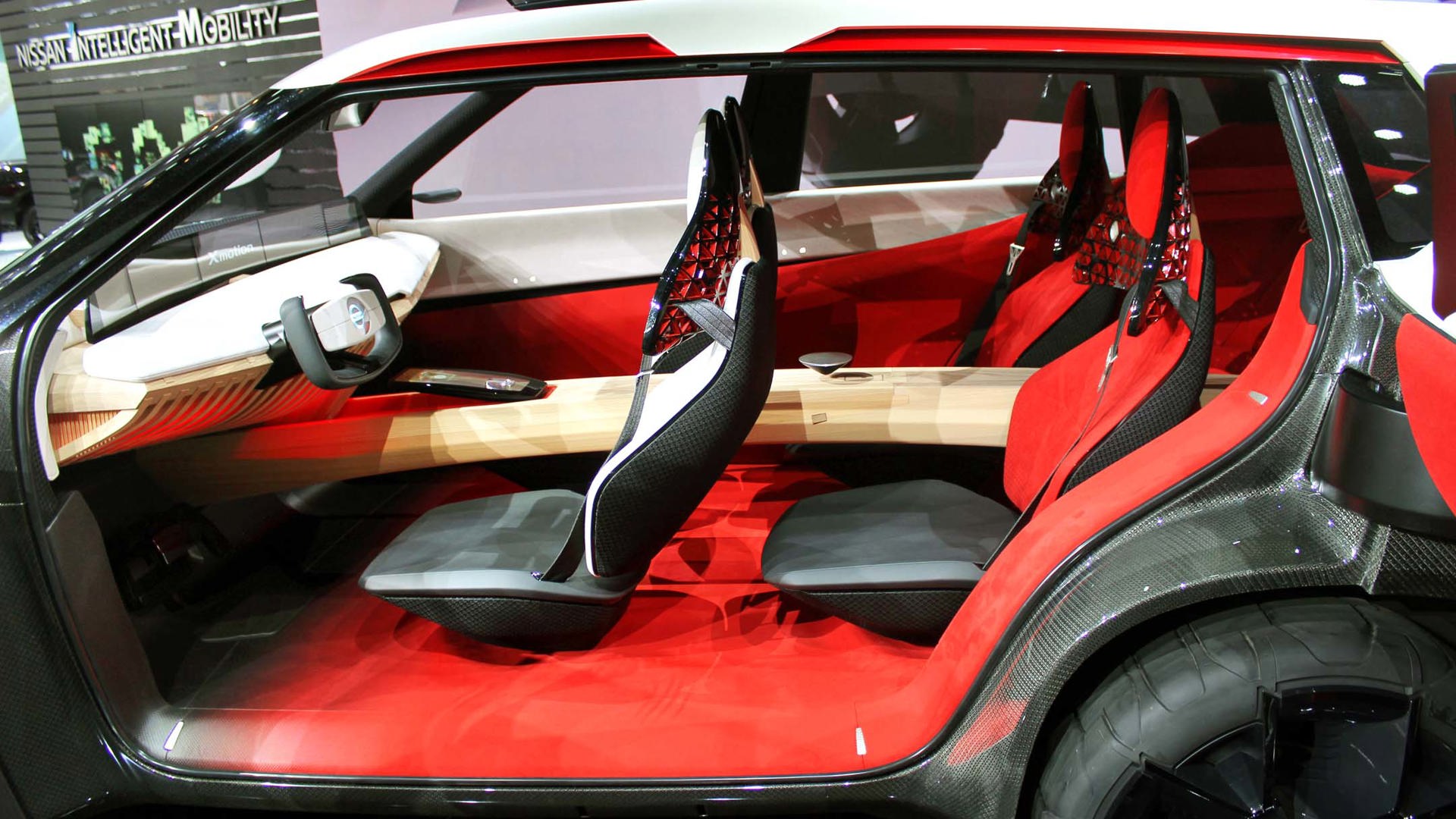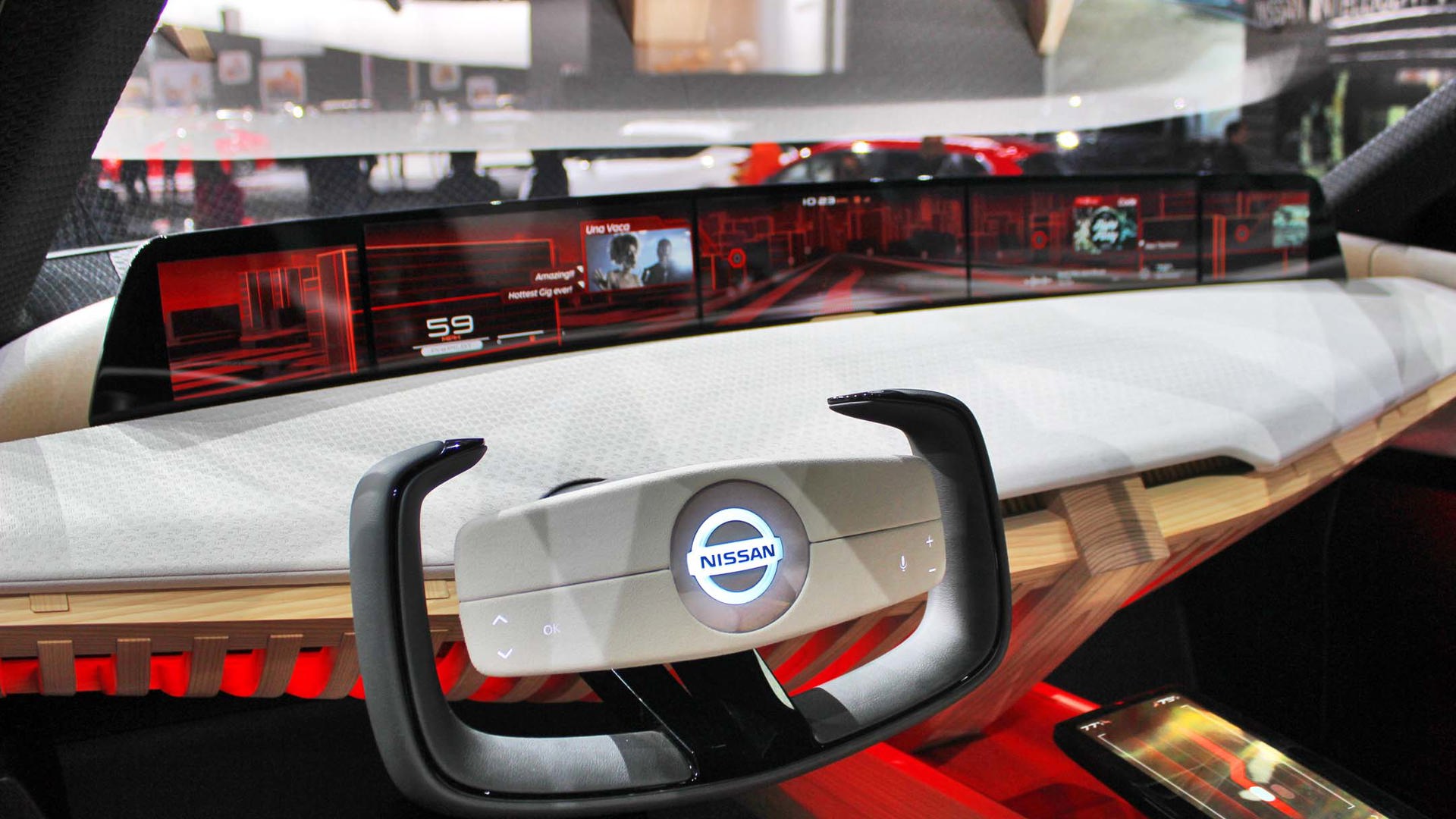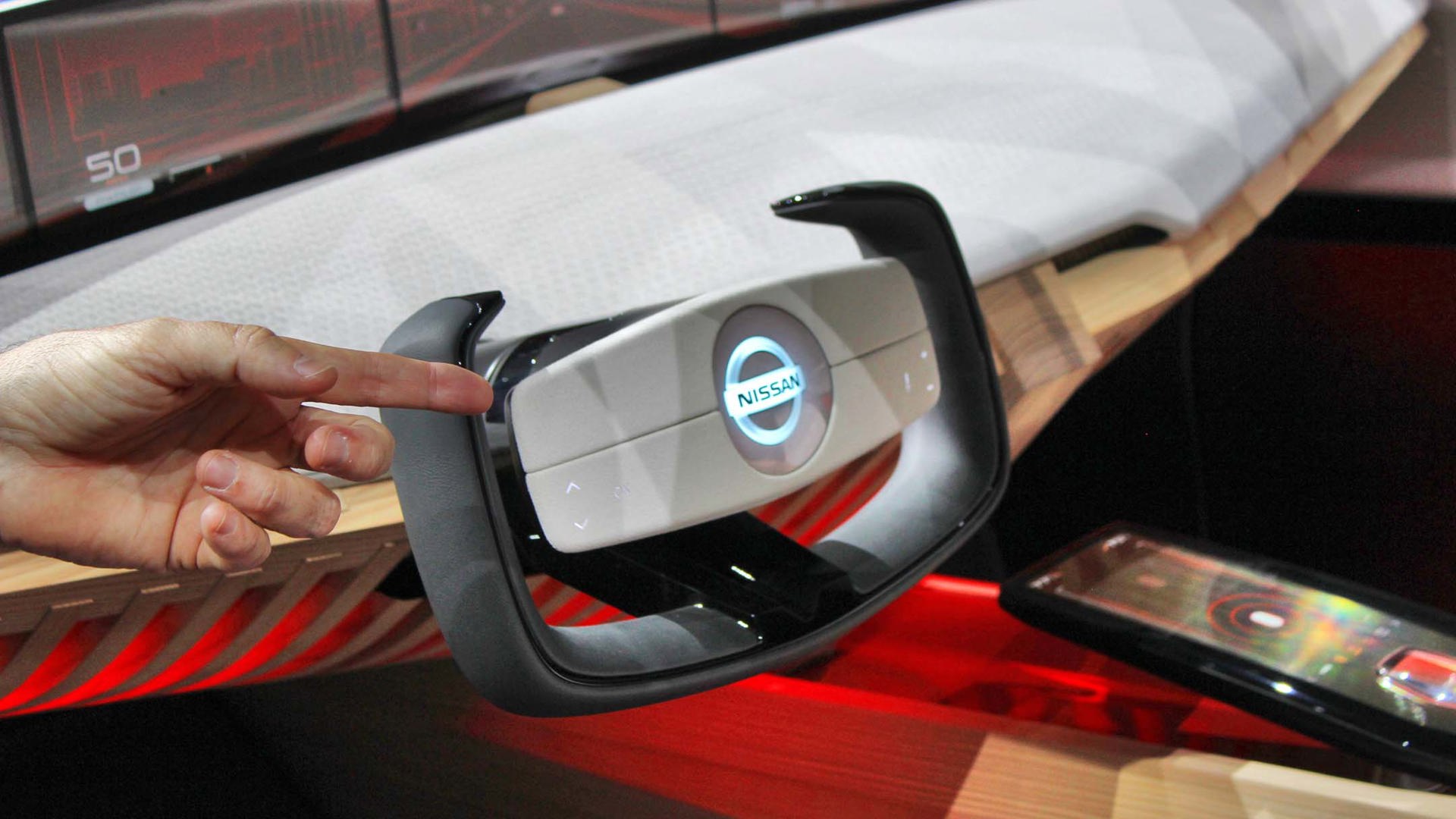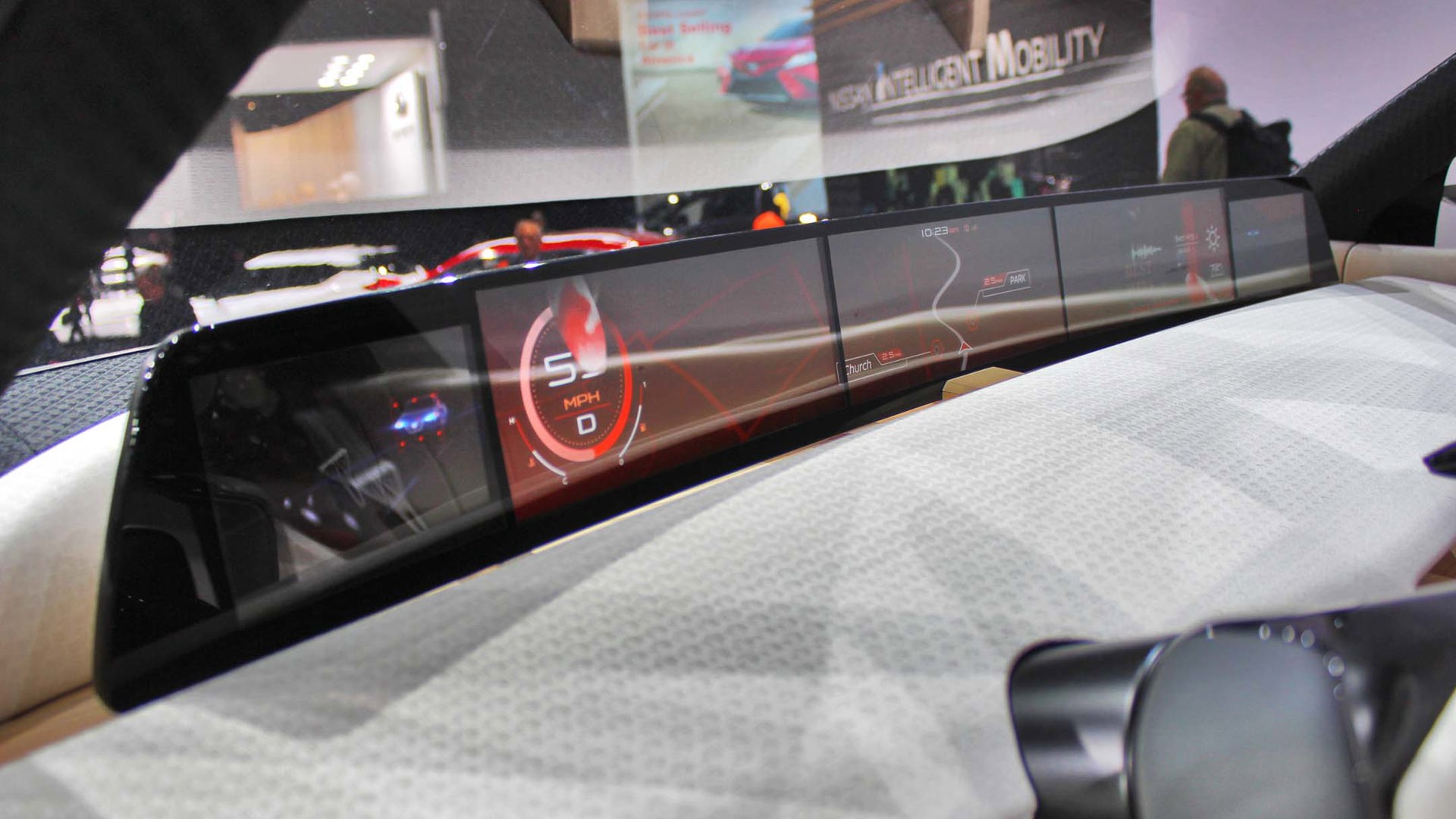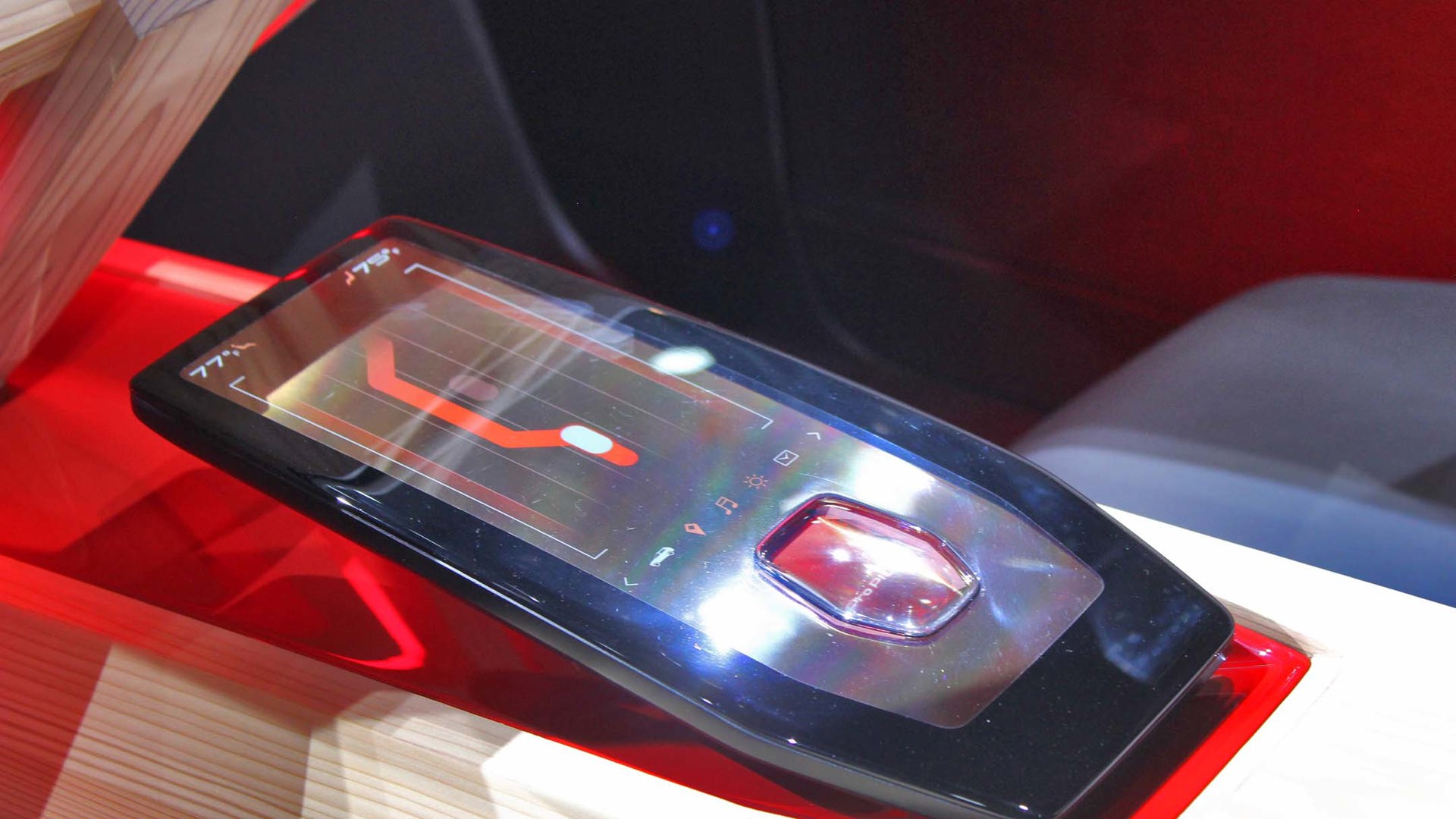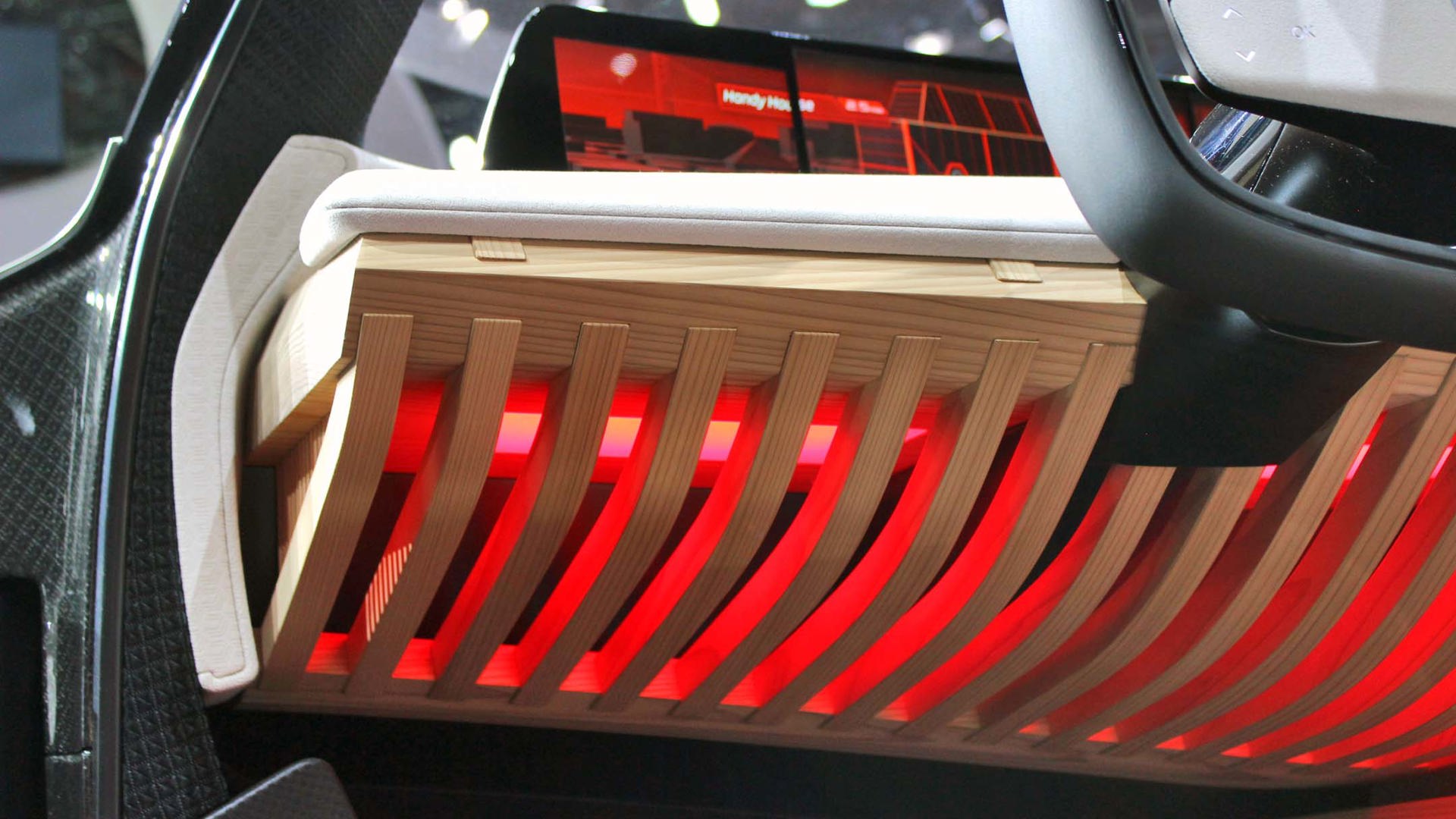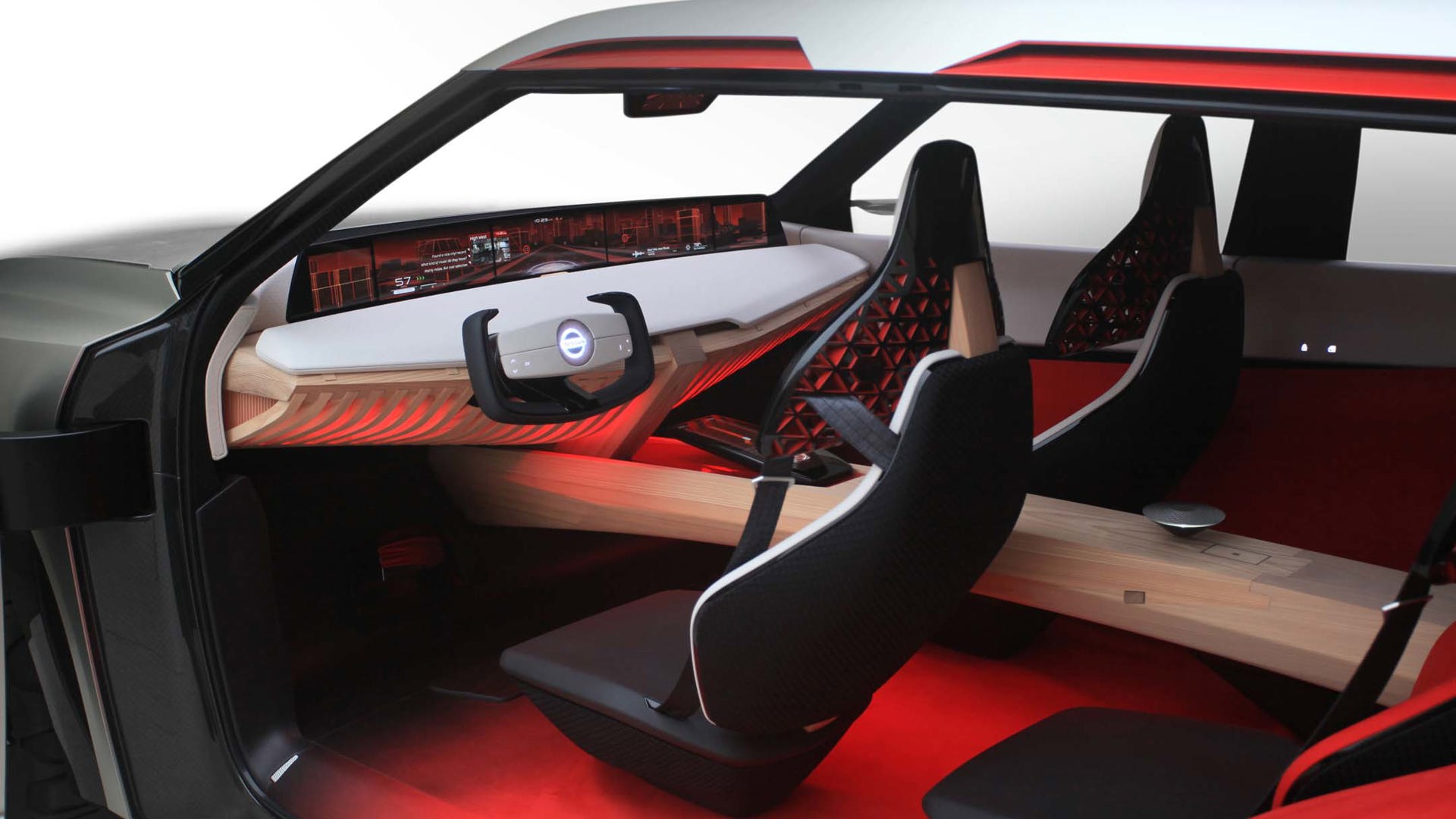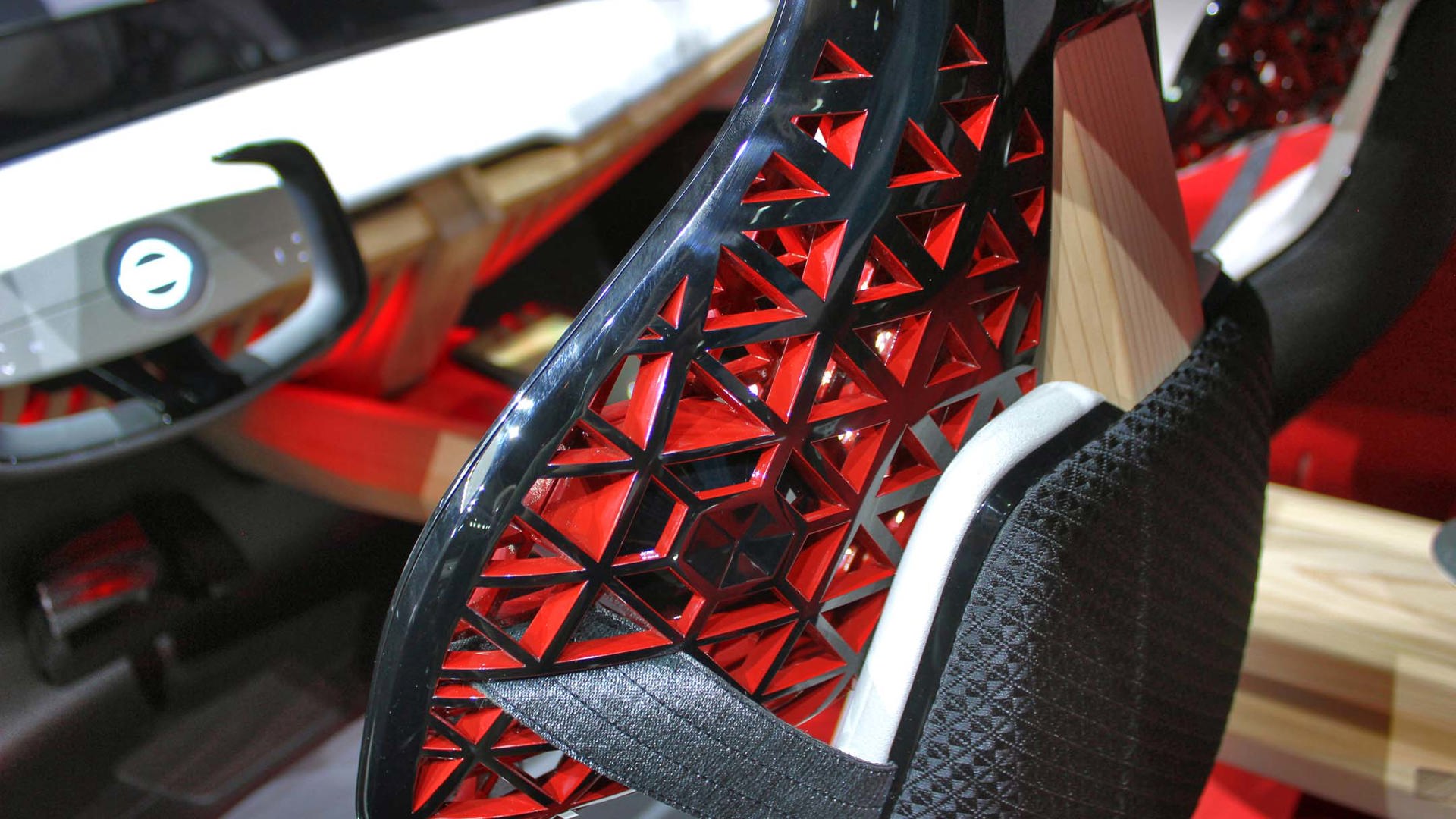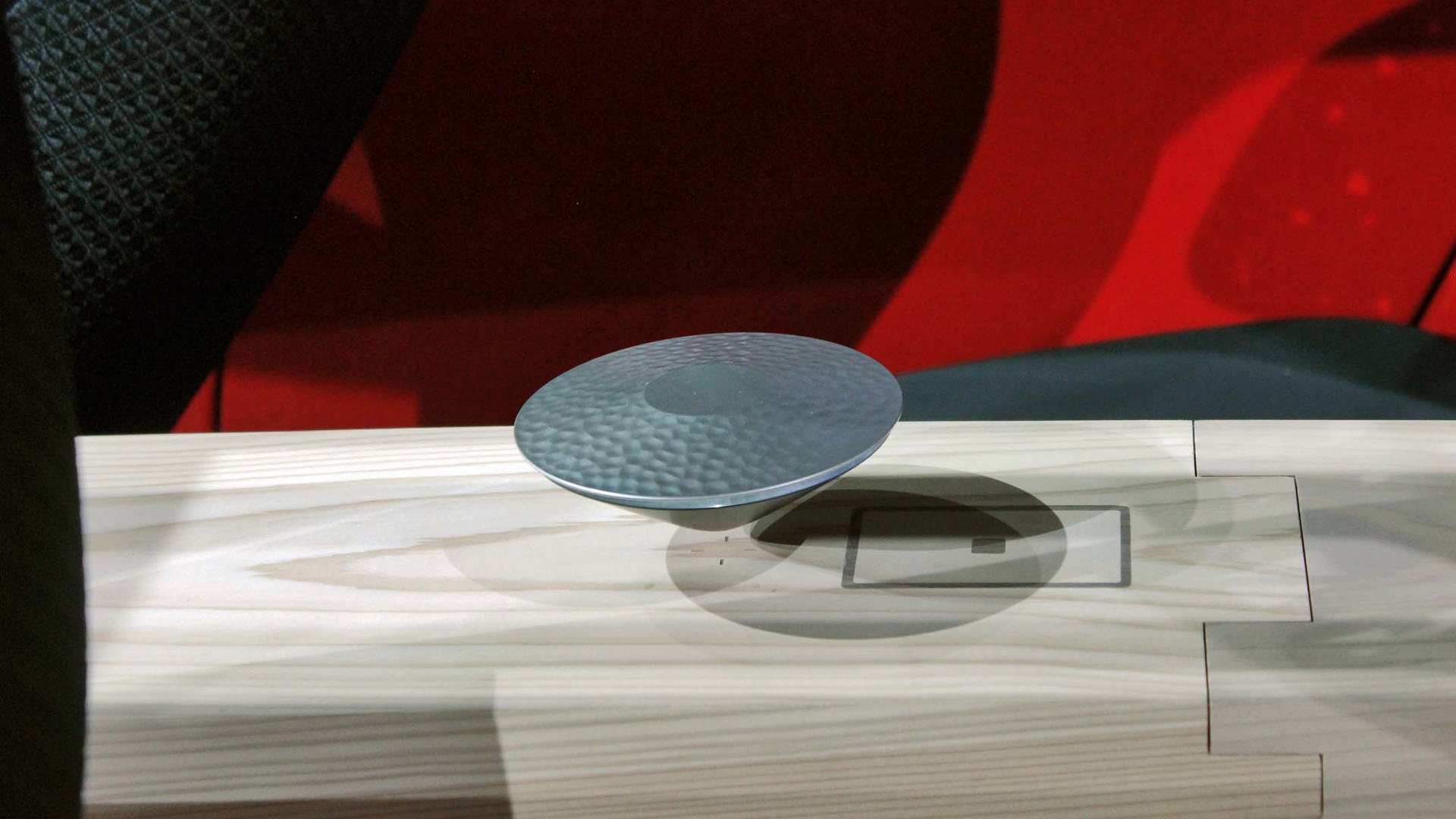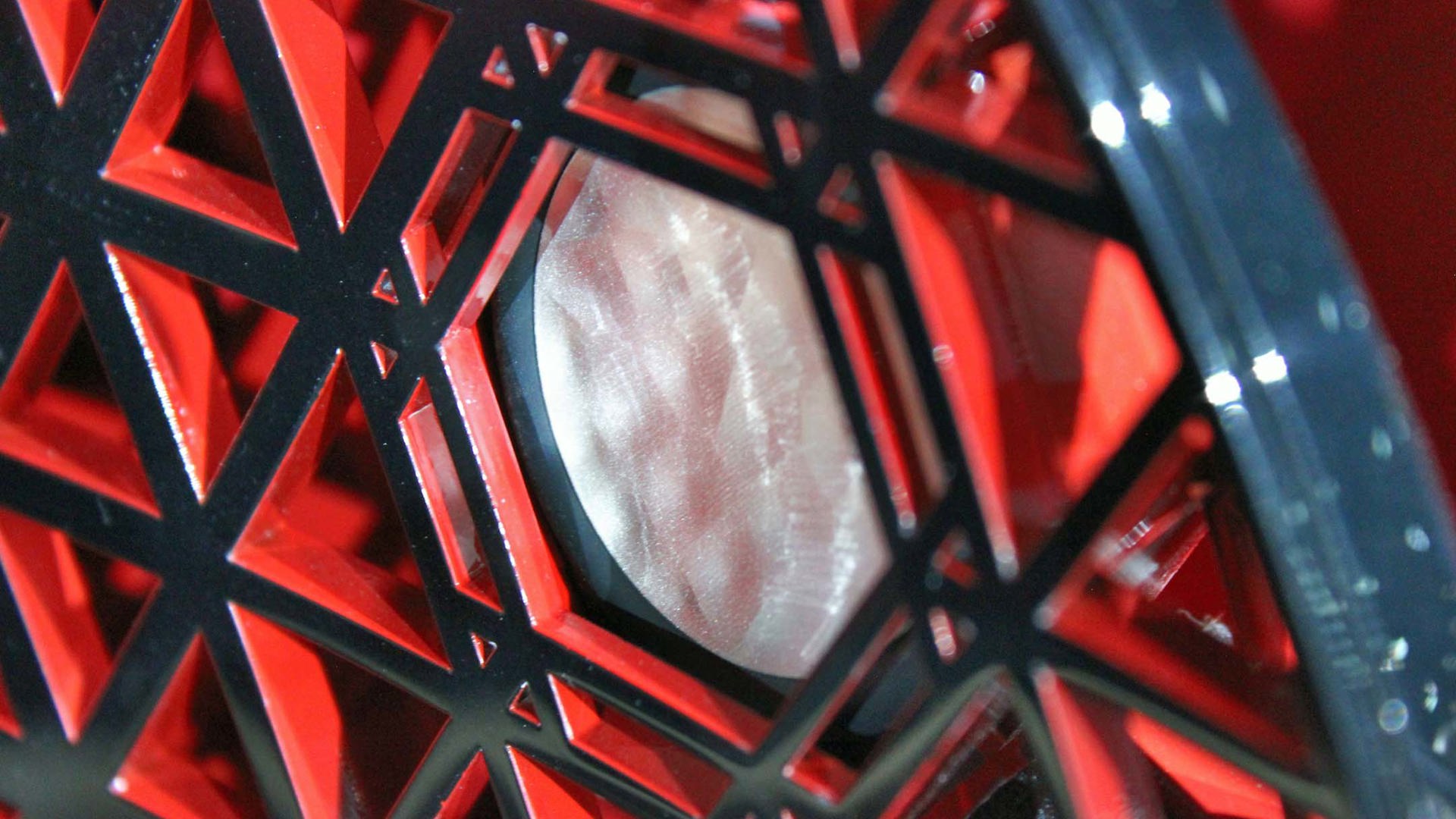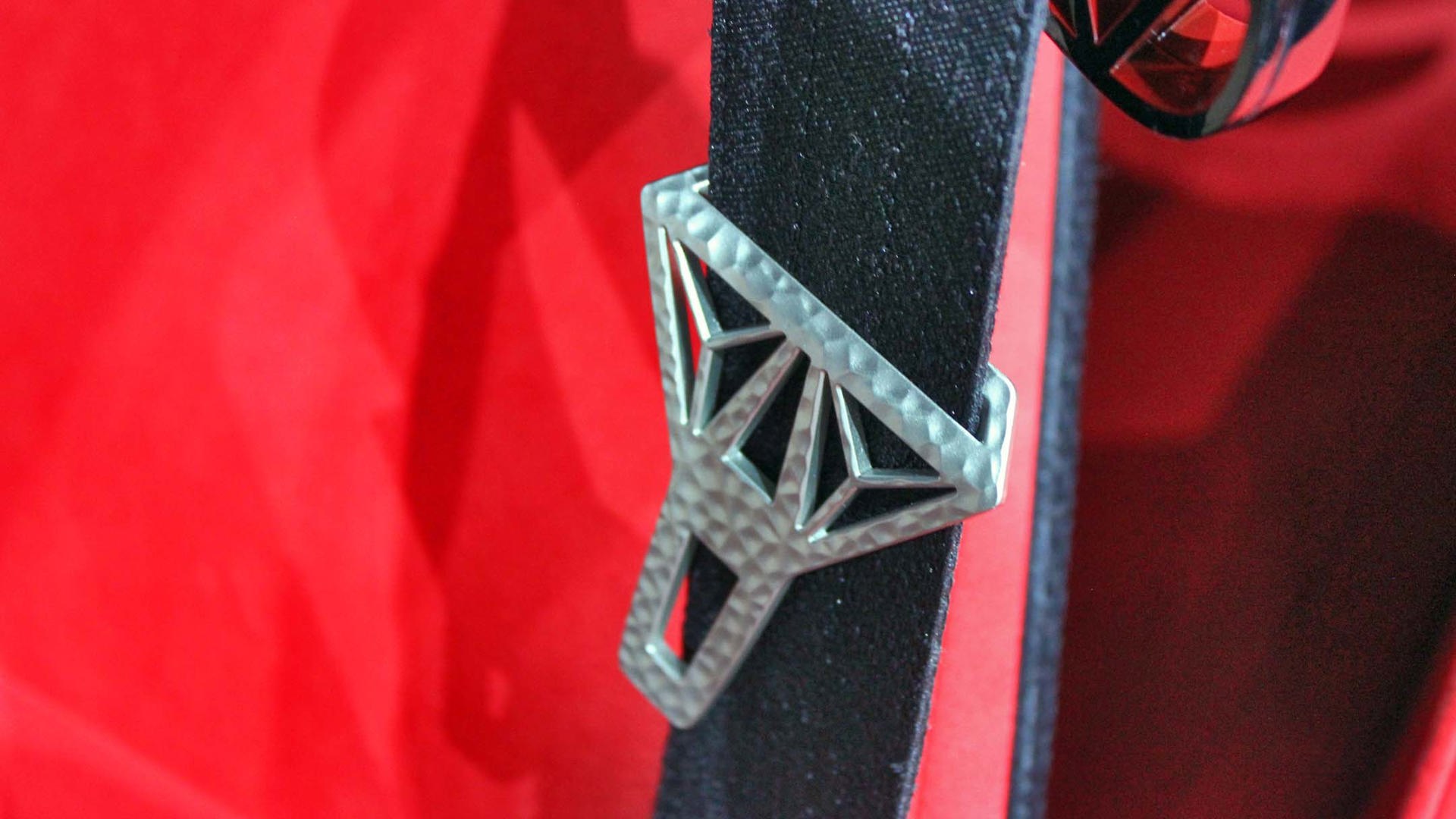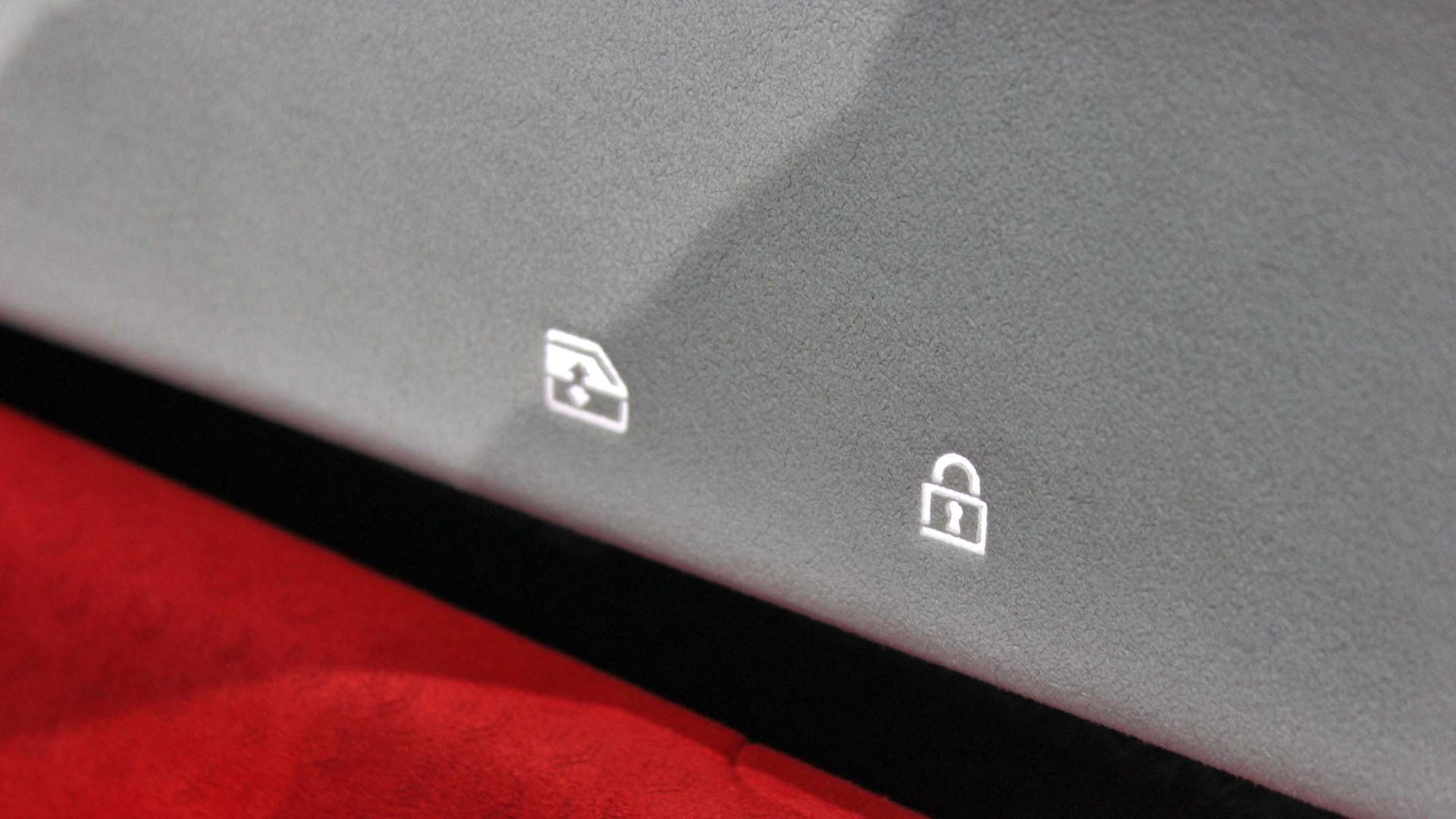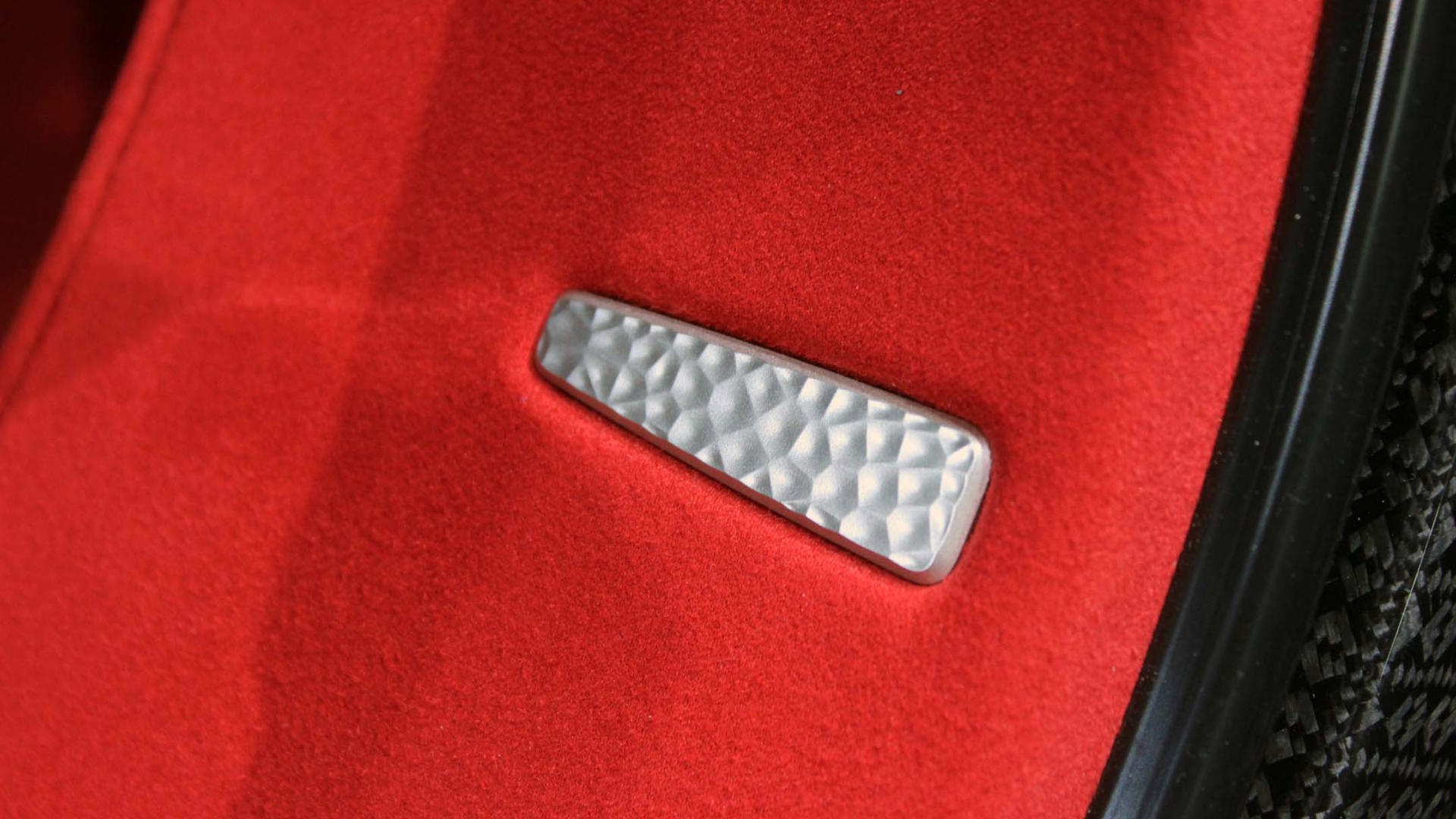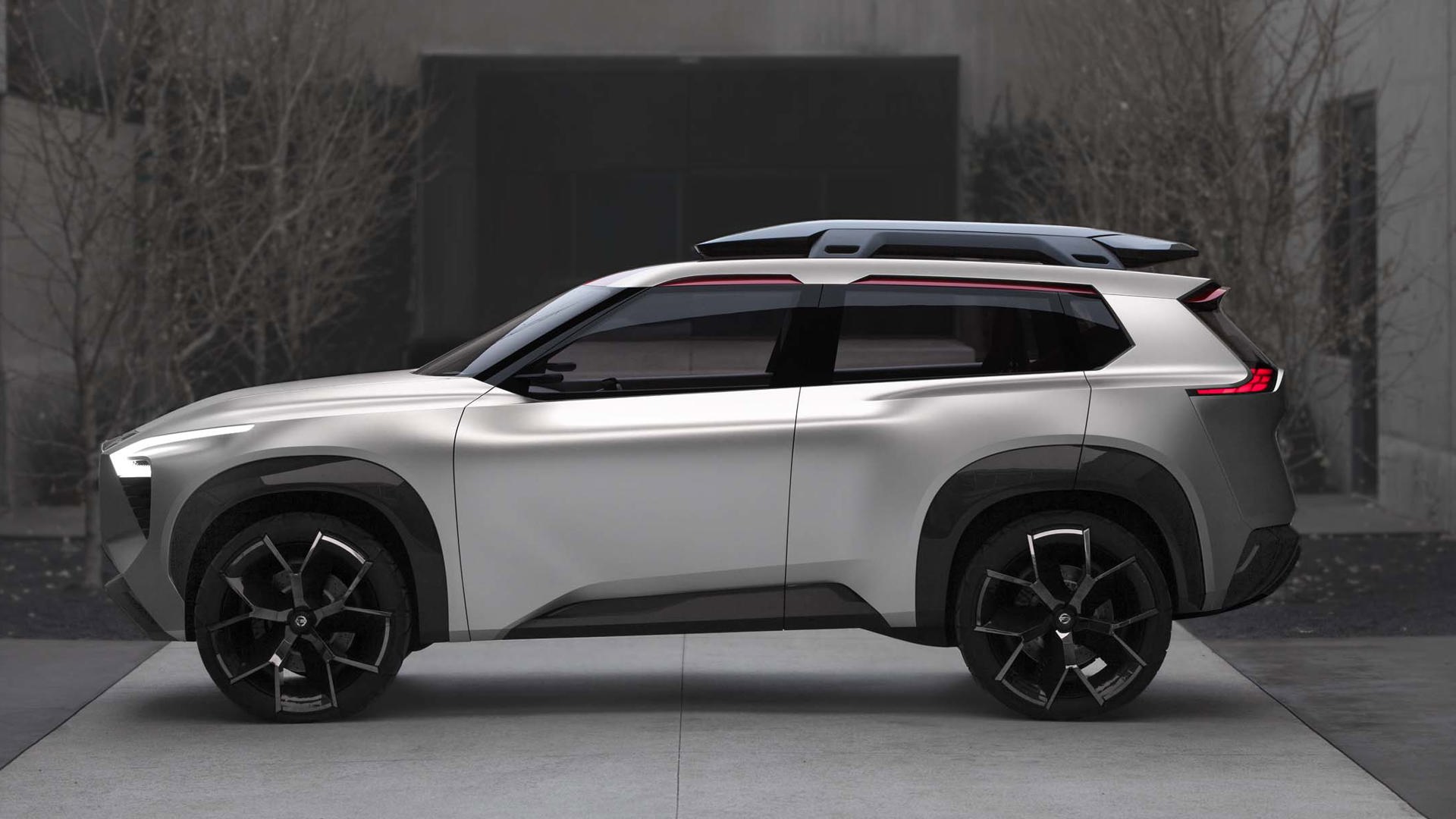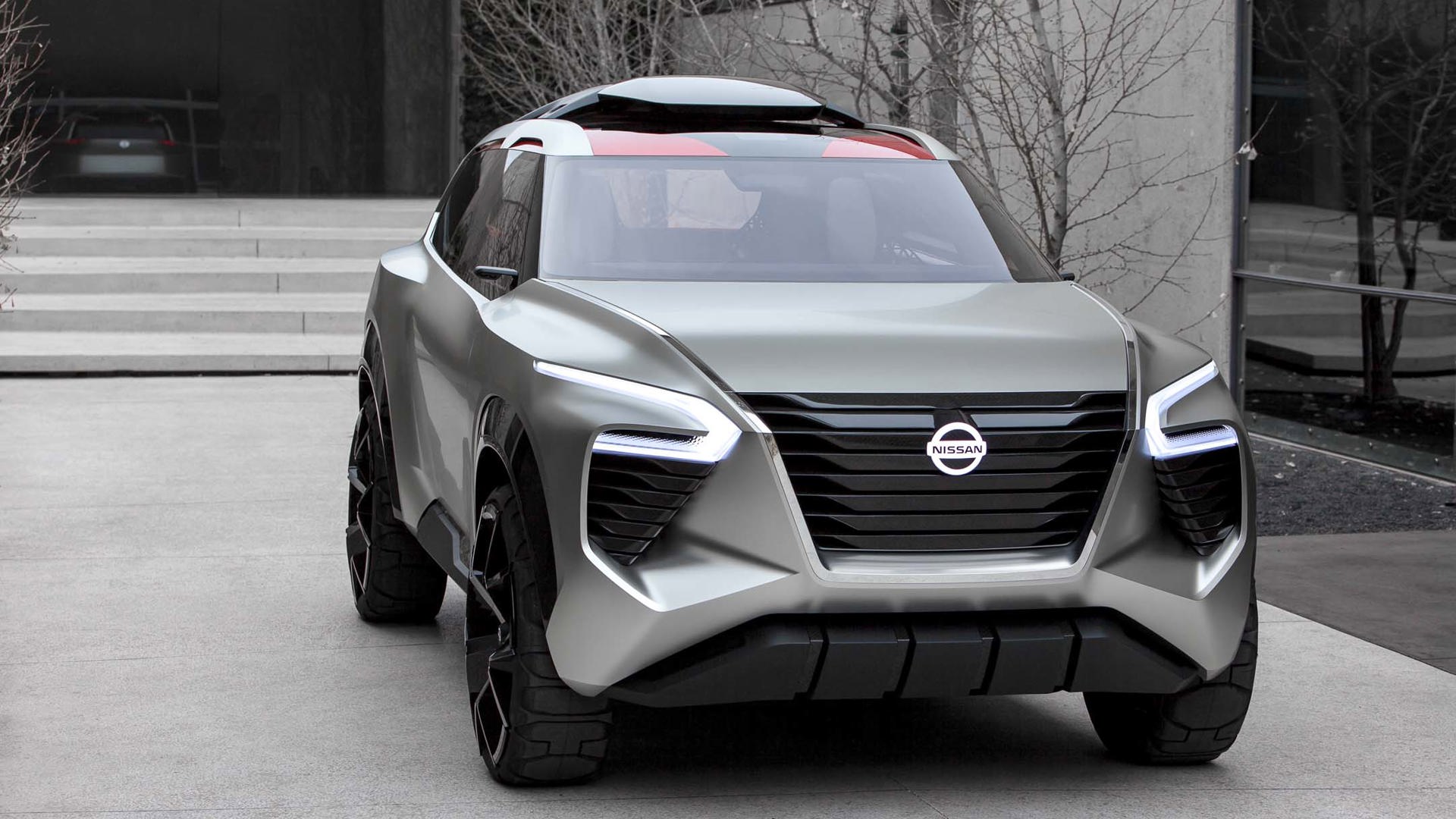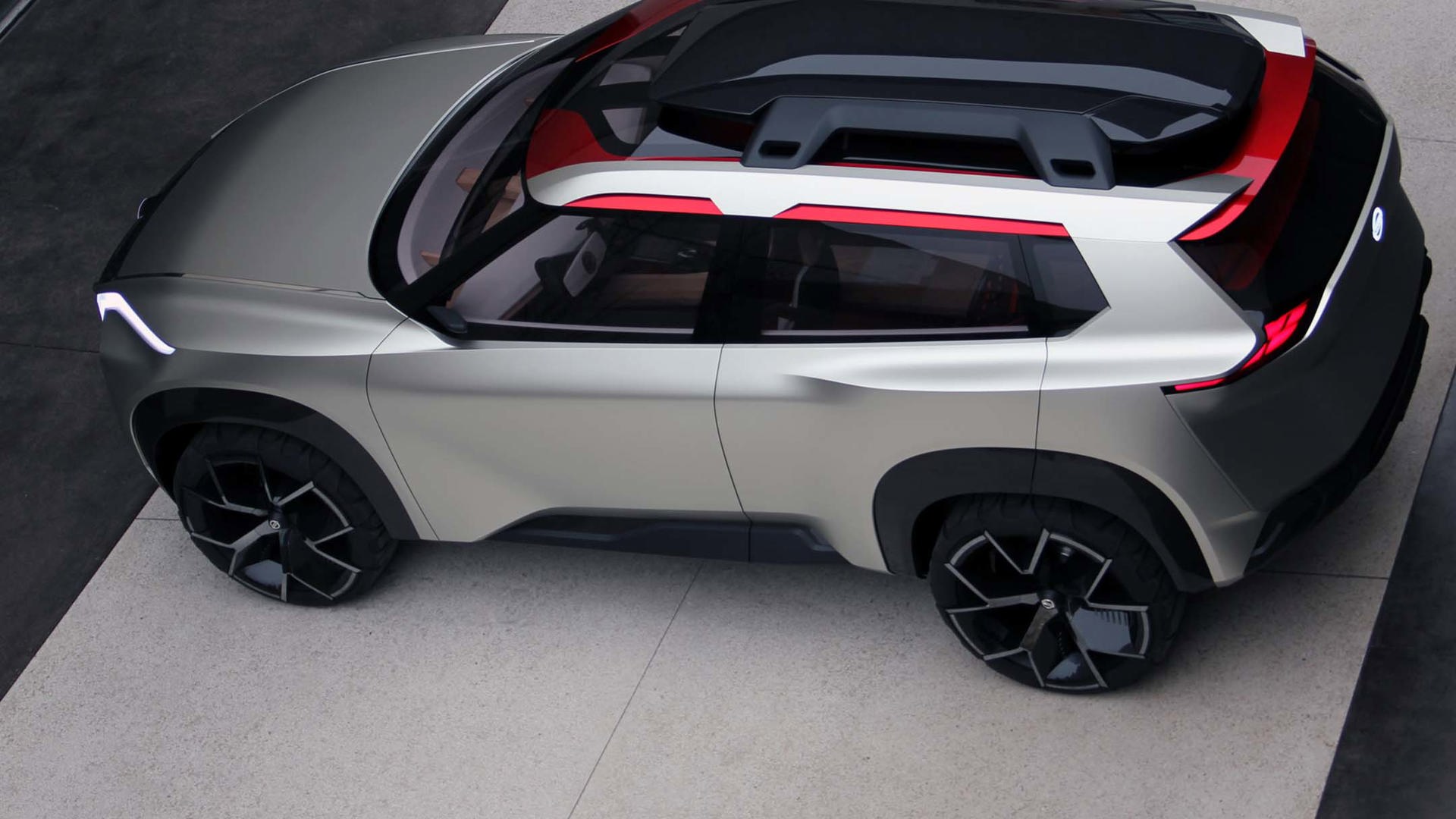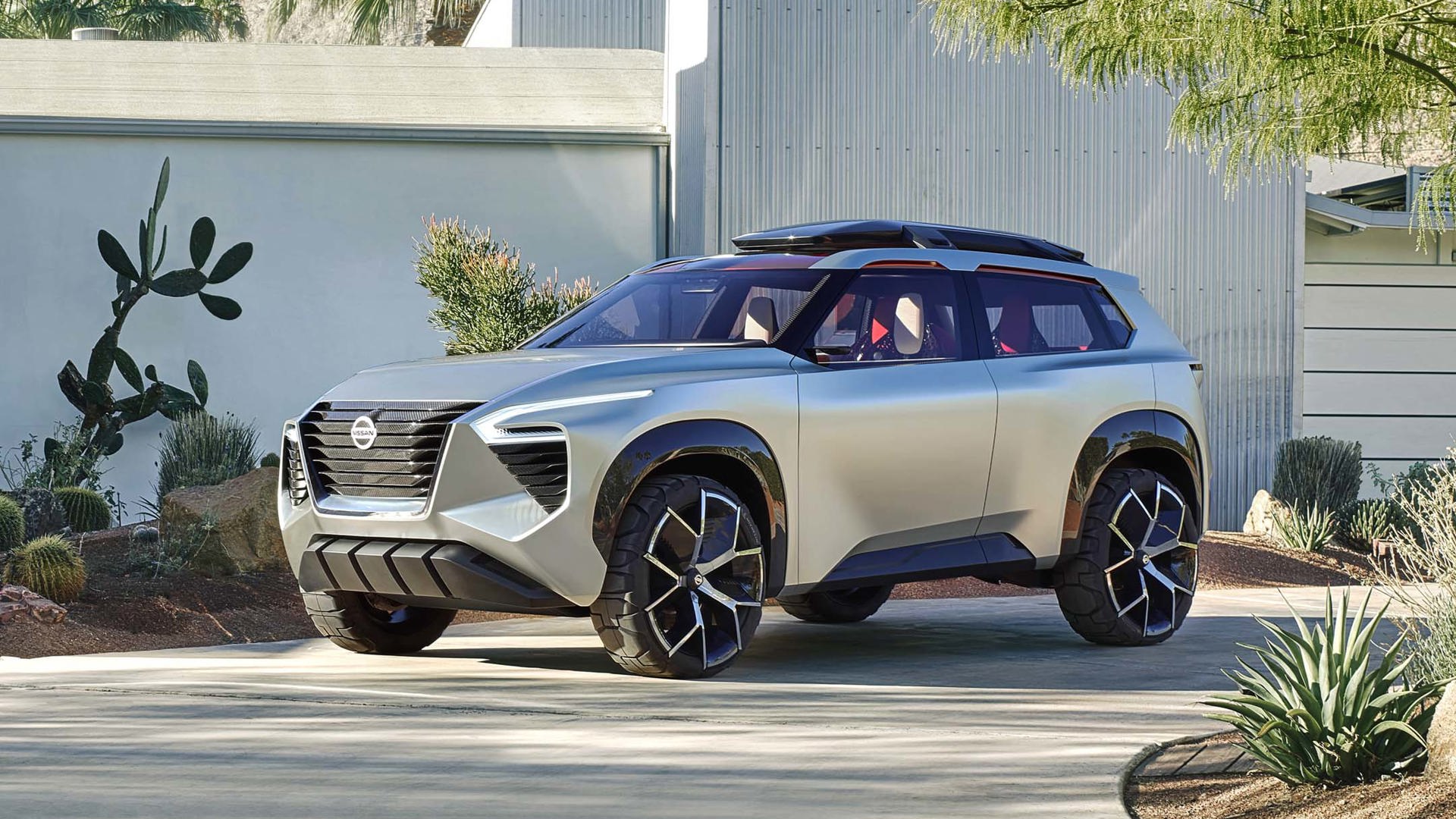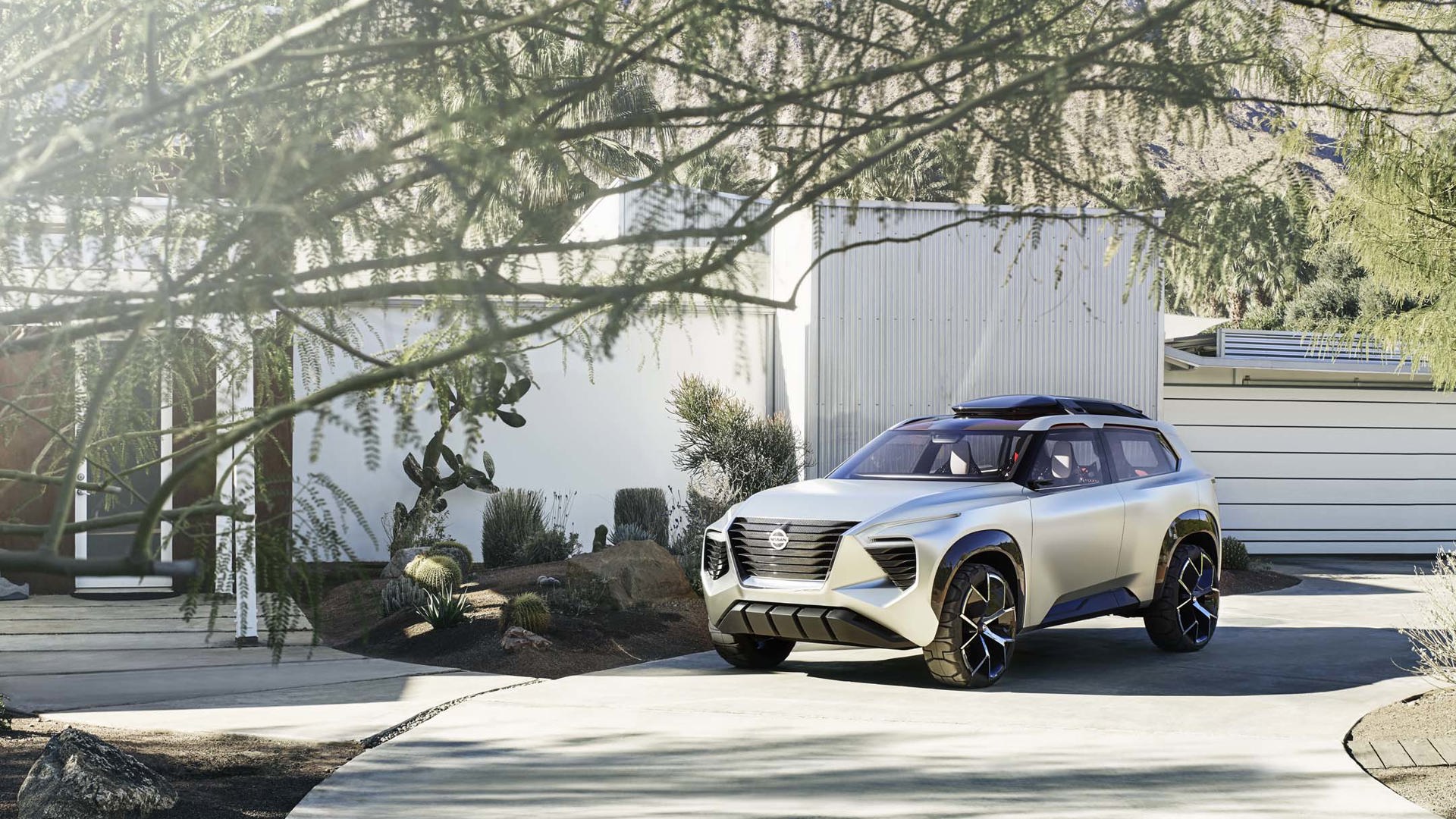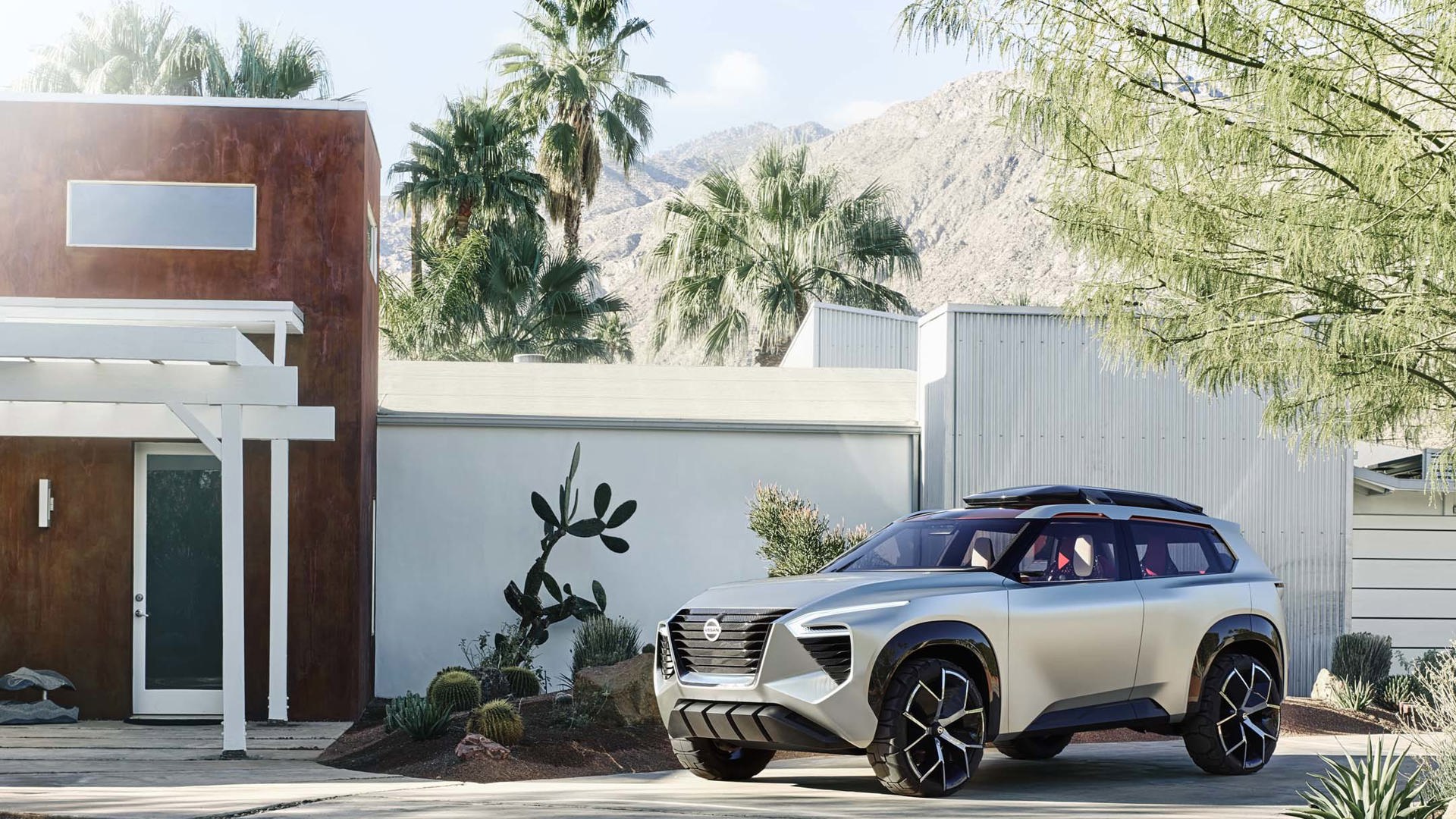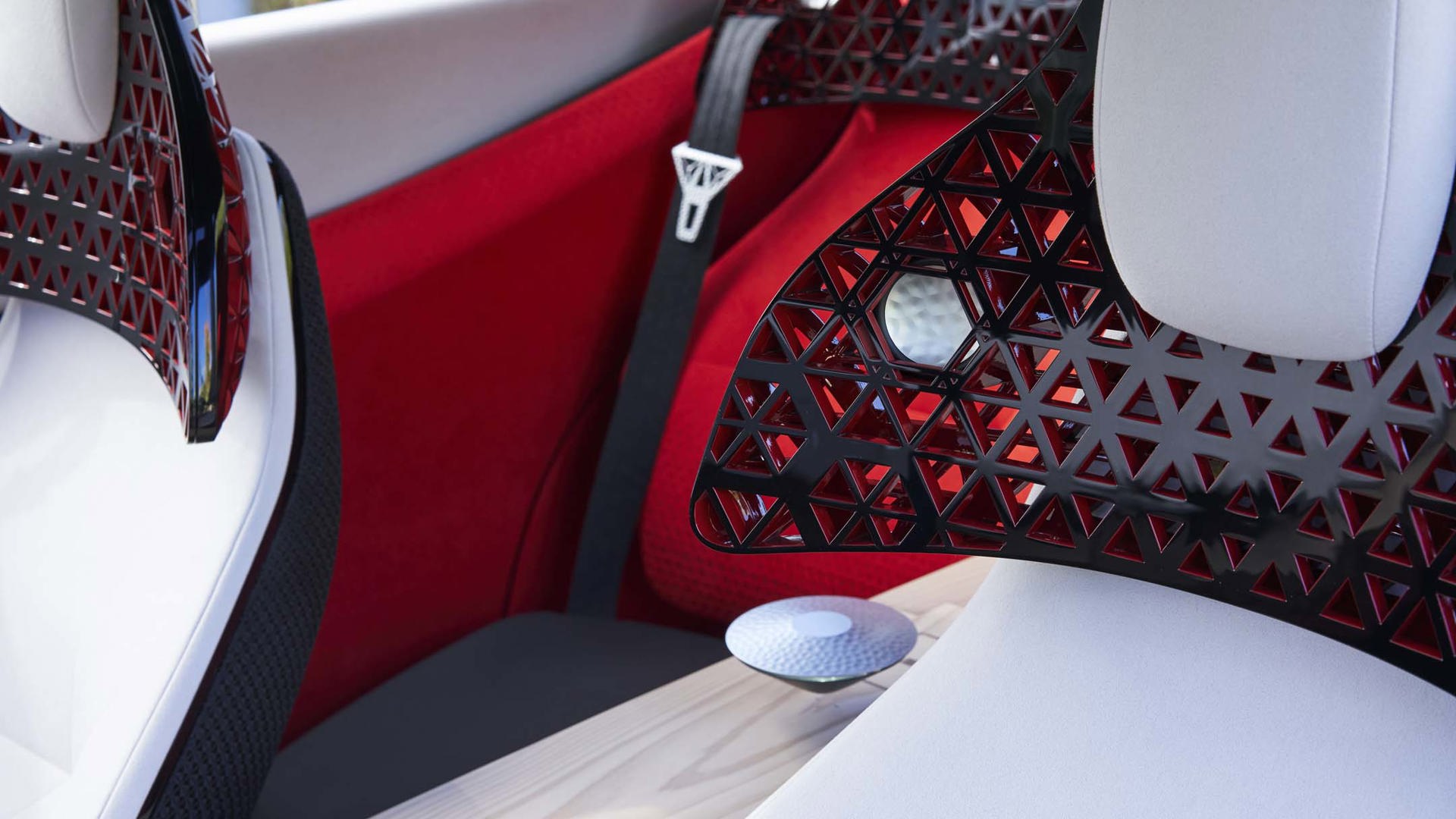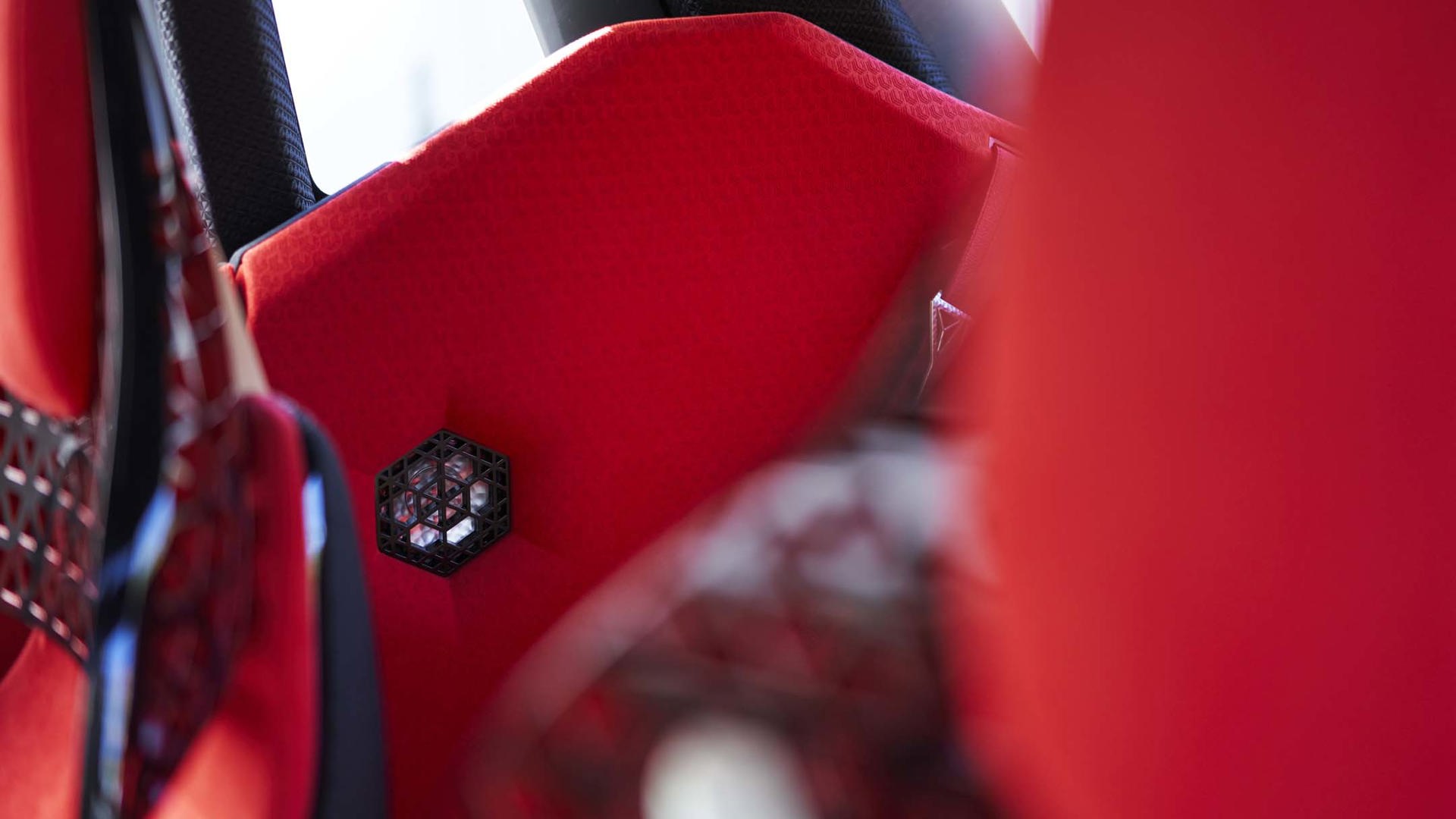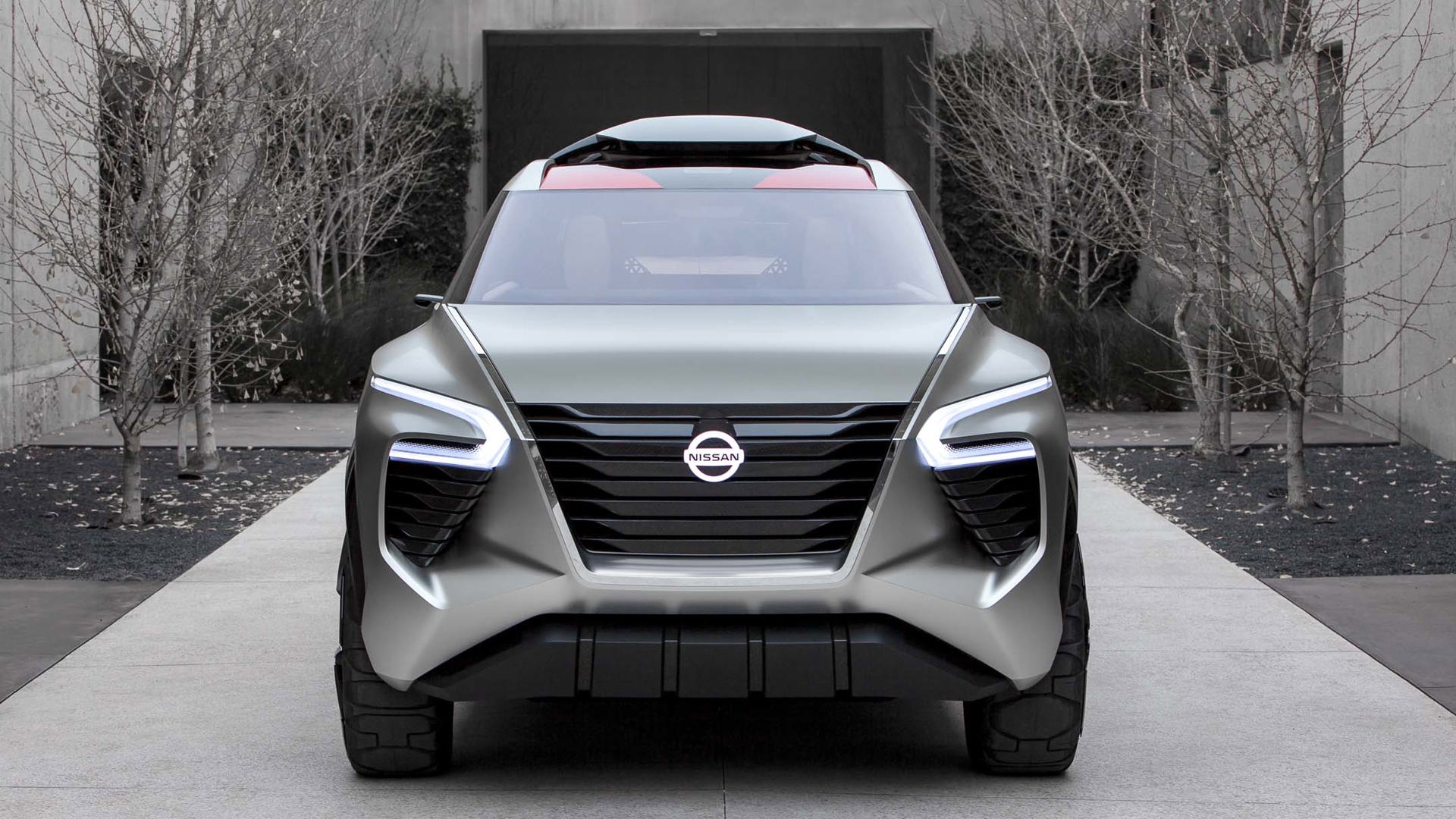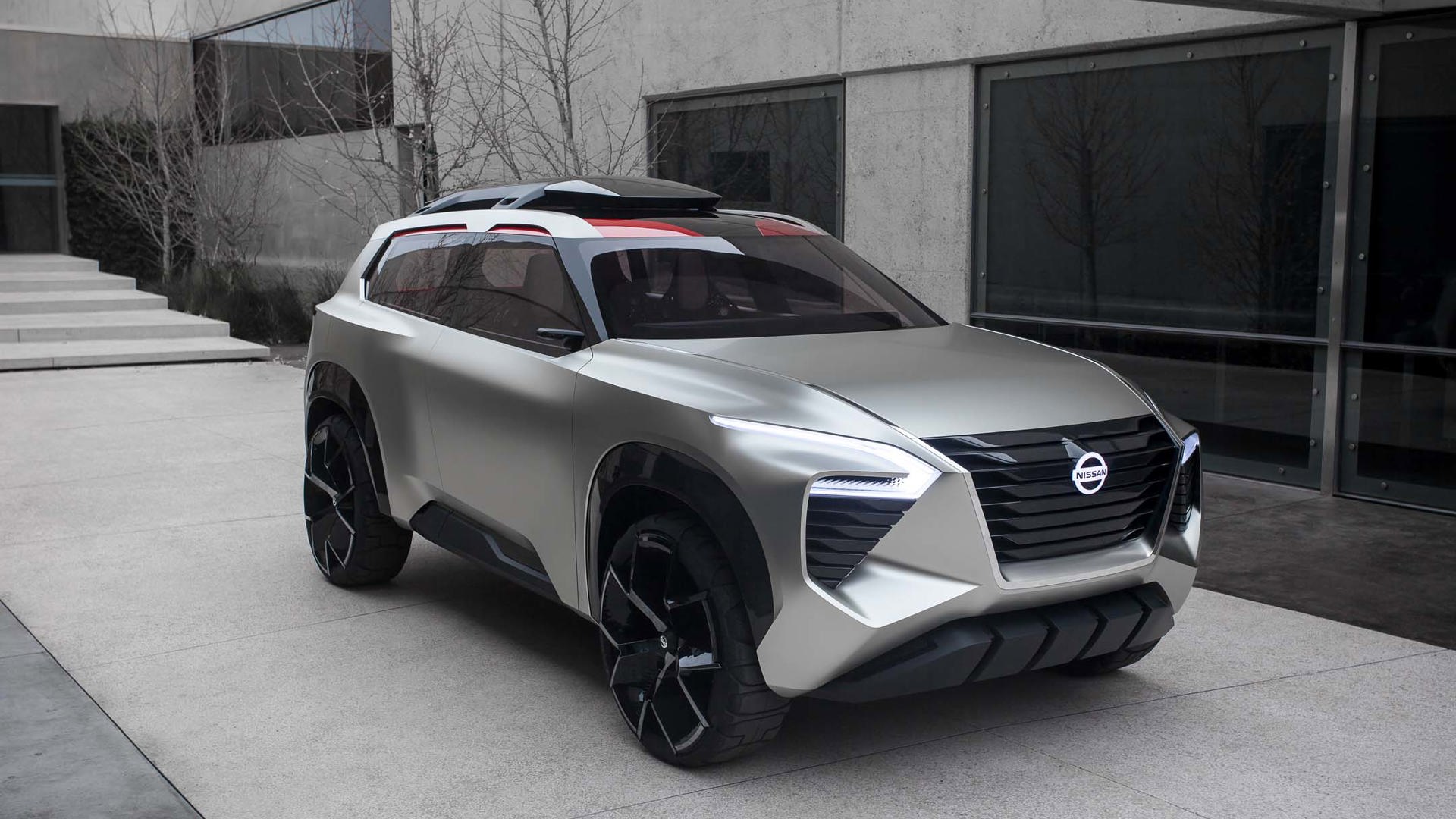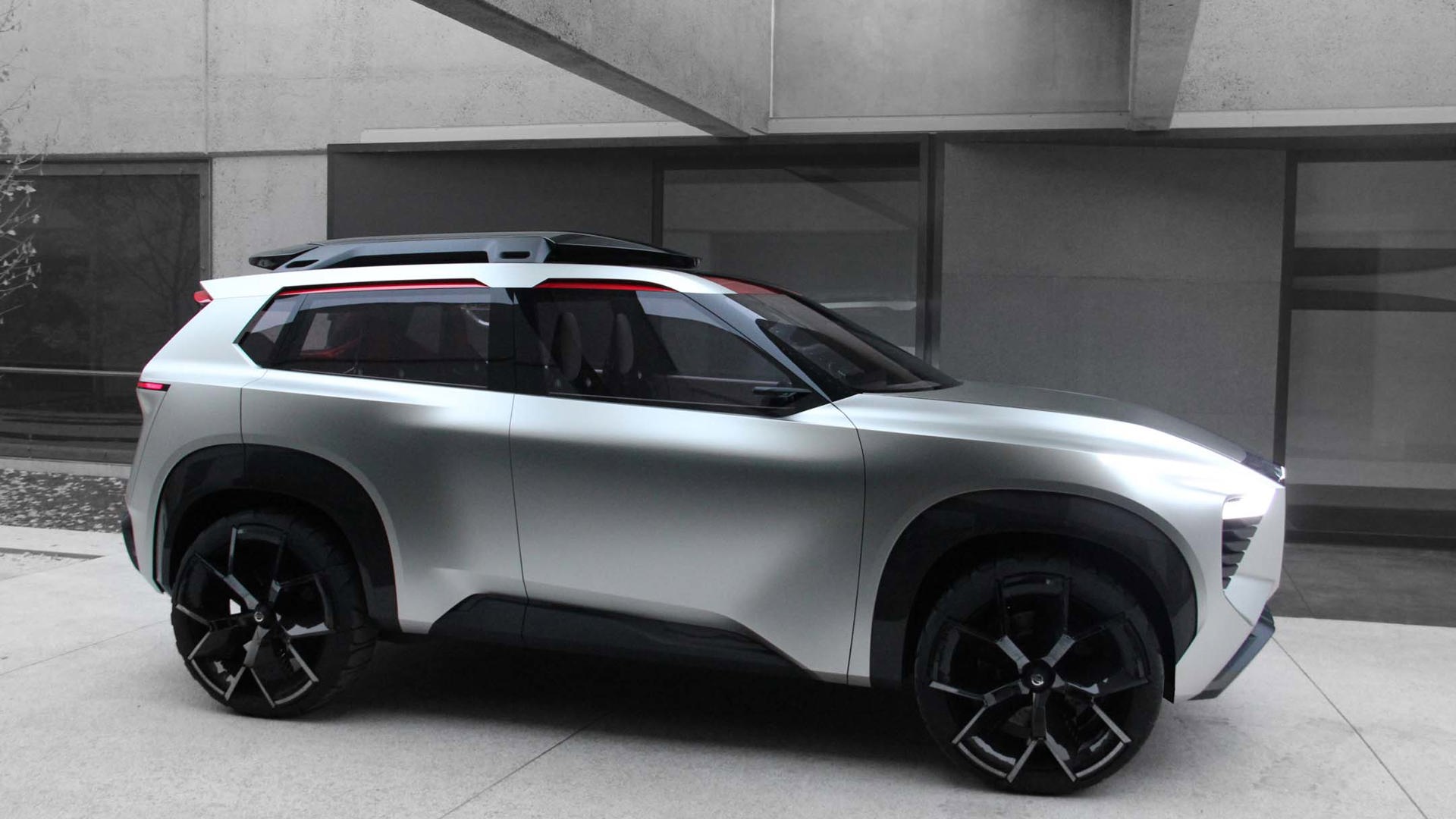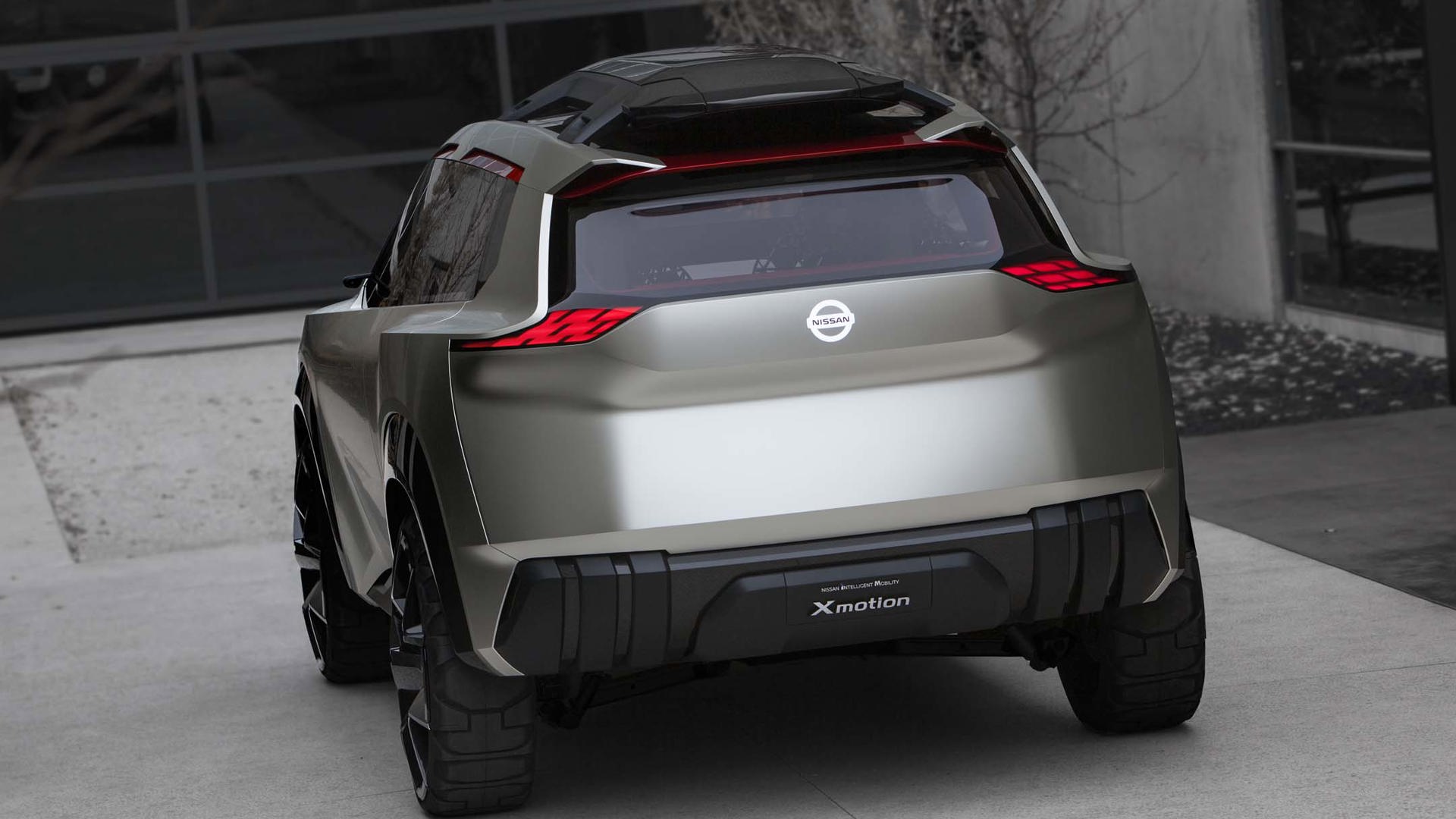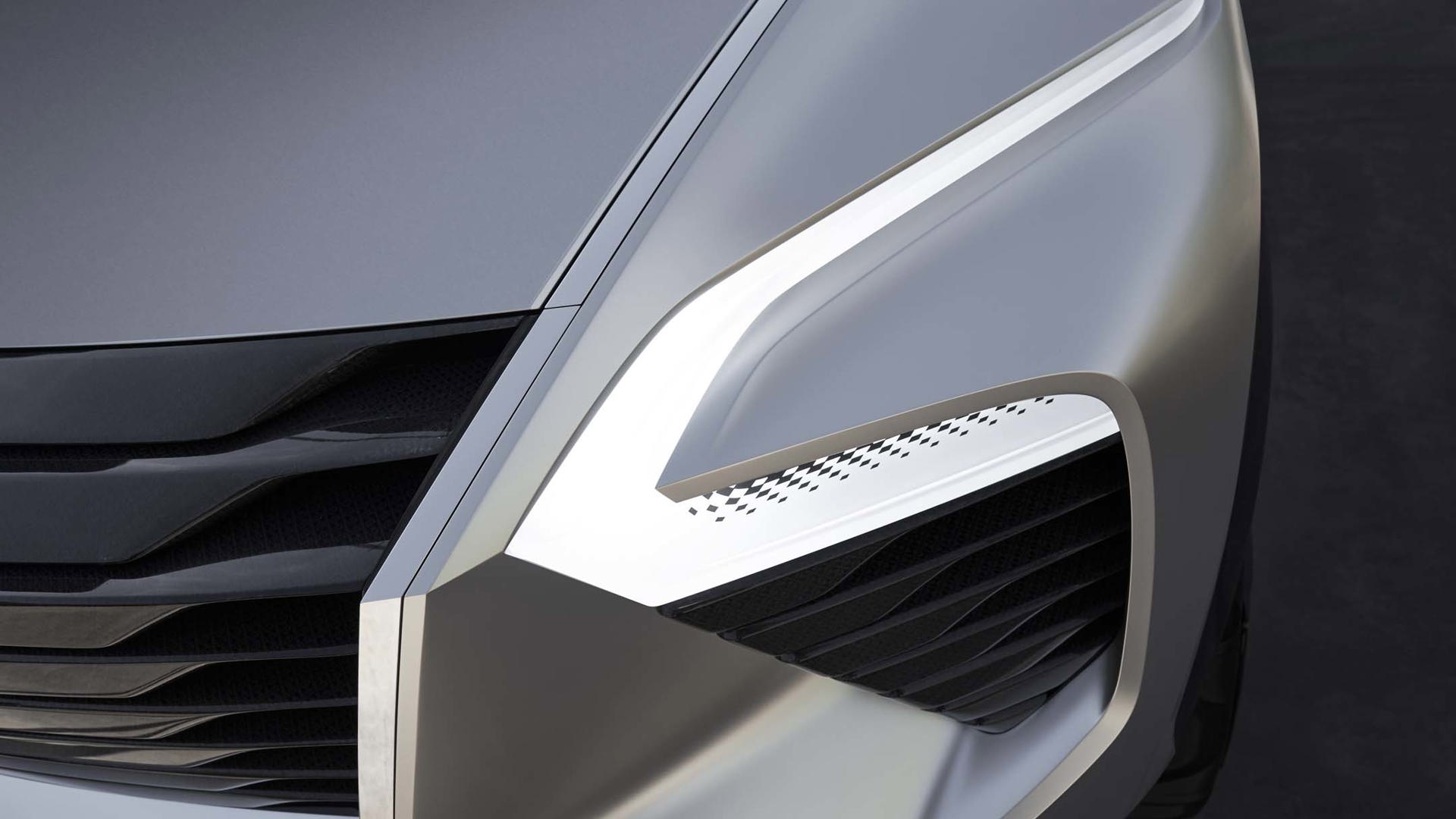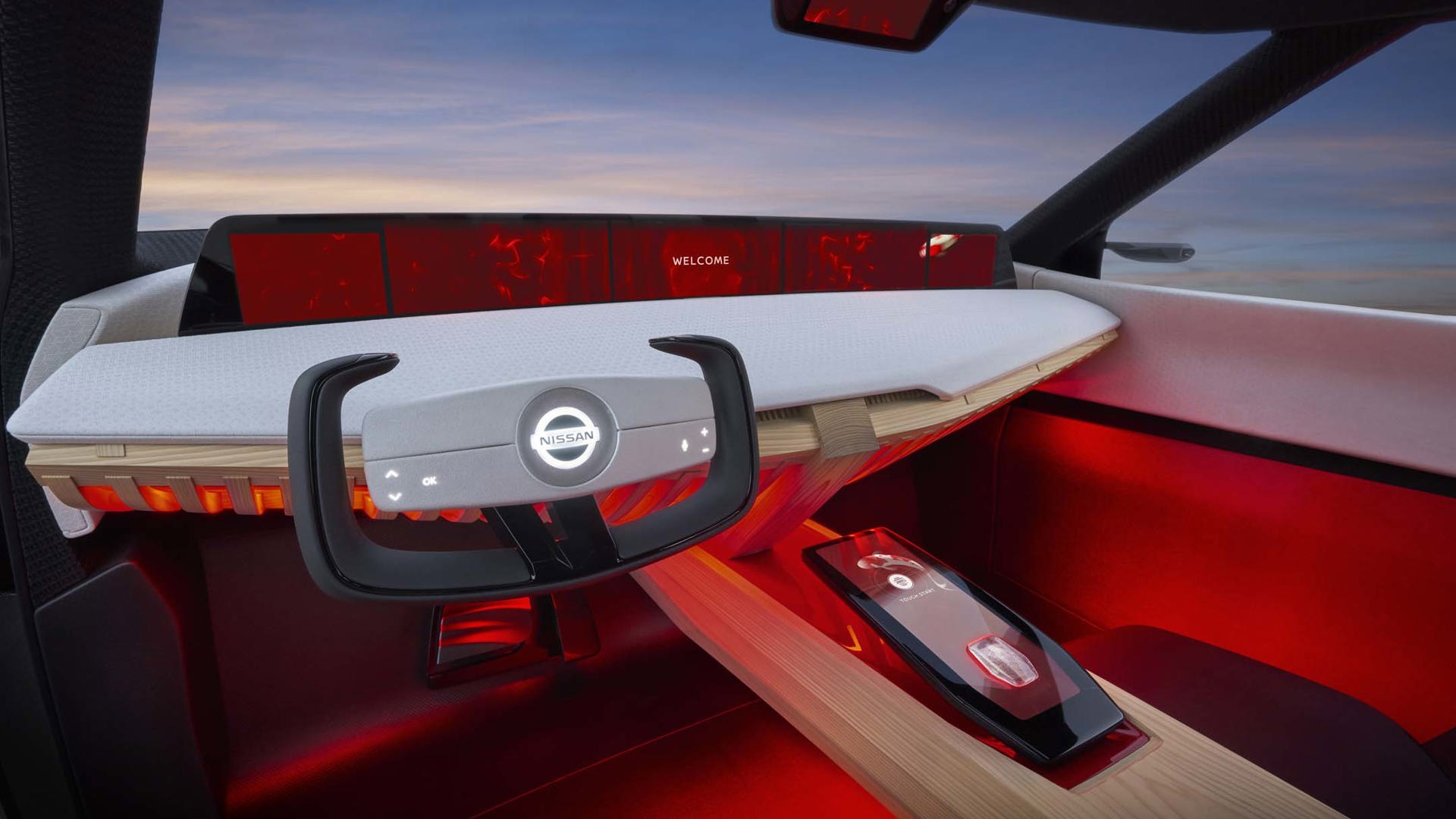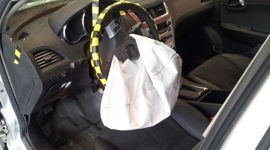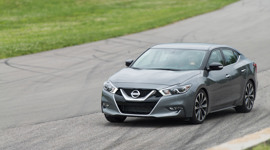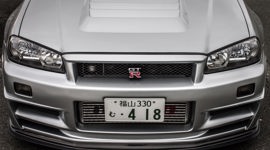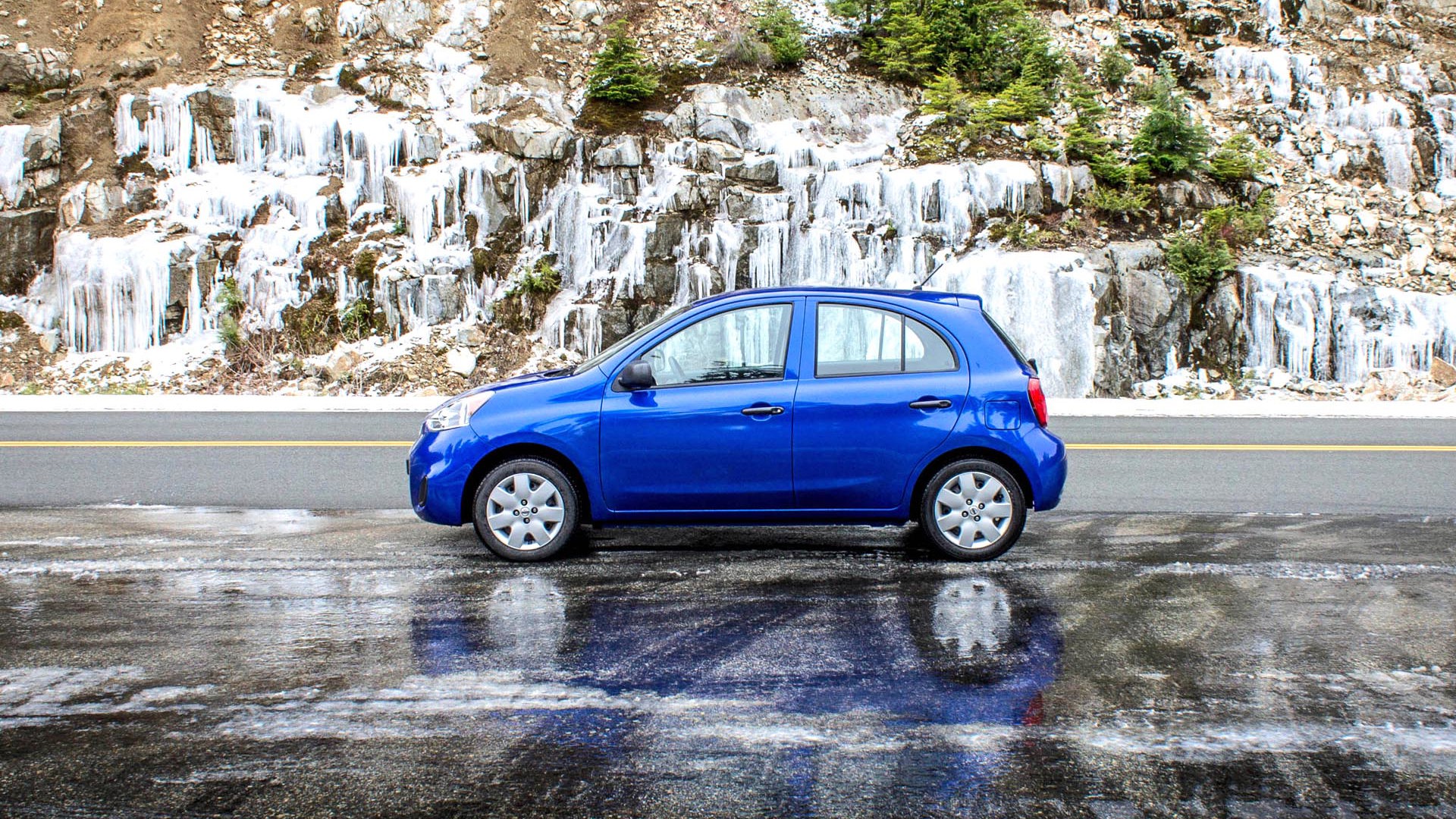Another auto show, another crossover for Nissan, right? It’s the law of the land these days, it seems, for the Japanese manufacturer. It was barely two months ago that they revealed the Juke-replacing Kicks in LA, where it debuted alongside the production-ready QX50 crossover from the brand’s luxury arm, Infiniti.
So now we’re at the North American International Auto Show and voila! The Nissan Xmotion (pronounced “cross-motion”) Concept is here with a stated goal to shirk the traditional SUV image – one that Nissan says is too uniform and lacks refinement – and to showcase a new direction In Nissan design, especially in the case of crossovers and SUVs.
As outlandish as it looks, there are a few design elements here that solidify its place as part of the Nissan family, including the boomerang headlights and V-motion grille. On the Xmotion, however, the grille is wider and has been given a set of horizontal bars inspired by Japanese architecture. The pewter exterior colour, meanwhile, recalls classic Japanese metalwork, which prized the metal for being malleable when heated, but strong once cooled. The headlights are said to resemble forged steel blades, like a samurai sword. The high-beam, low-beam, and turn indicators are all part of a single unit.
“We are coming from Japan,” said Taro Ueda, VP of Nissan Design America. “We want to grow the technology for the future but as a designer, you have to look back and understand Japan’s rich tradition.”
Around back, Nissan turned to the other end of the material spectrum with holographic taillamps inspired by traditional Japanese woodwork. Ueda explains that while it may look like numerous bulbs exist, there’s actually a single LED light hidden behind each lens, and what you’re seeing is a reflection of that light. That’s how the “bulbs” appear to move with you as you move around the vehicle.
The view from the side, meanwhile, is highlighted by bespoke Michelin tires that are actually laminated to the wheel, for a one-piece look that makes the wheels look bigger than their 21-inch measurement suggests. Personally, I find them a little moon-boot-ish, but they are distinctive. It’s all part of Nissan trying to fuse Japanese design and American utility.
The “wood” theme continues inside, in a big way. Large swathes of Japanese cedar cover the interior; the fact that it’s a mix of veneer and real wood means that less wood had to be used, thereby having less of an impact on the environment. Special attention has been paid, however, to making the veneer smell just like real wood, and also to ensure that the grain direction is correct.
While there are three rows, there is seating only for six as there is no bench seat, which, according to Nissan, is what its target demographic of young couples and their families are looking for.
That’s the obvious stuff; less obvious is the way the upper door panels reach to the rear, forming a shape at the base of the C-pillar styled to look like Mount Fuji, as well as a floor pattern made to look like rolling waves. The wooden centre console is styled to recall the wooden bridges that dot the Japanese landscape.
Oh, and all that veneer you see inside? The way it’s built is similar to traditional Japanese shrines in that not an ounce of glue or a single nail was used to hold in all together. Instead, what you have is a tongue-in-groove system for the various wooden panels.
“[With the Xmotion,] you have this great rugged and strong exterior, but inside is where we’re looking to find more uniqueness,” said Ueda.
If you’re thinking, “Hey! I thought the Xmotion was all about wood and nature? What’s with the carbon fibre I see?” – you’re partially correct. Wood does play a big part in the interior accoutrements, but the carbon has a connection with Japanese culture as well, in that it’s actually woven in Japan’s Nishijin textile district, known for its expansive tapestries and – wait for it – kimonos. Yes, the flowing garment made oh-so-famous by Homer Simpson when he spent a season seven episode of The Simpsons getting even fatter than usual. That’s why the carbon you see – on the grille and fenders, as well as the seatbacks inside – looks so different than your typical carbon weave.
Of course, no concept these days is complete without some form of advanced safety and cabin tech, and the Xmotion is no exception. A total of seven screens are spread throughout the interior (the concept’s wing mirrors are actually cameras, too), including five that span the length of the dash. Oh, and they can all be controlled via hand gestures and eye movements, too, which is a whole ‘nother level.
Essentially, the system can read where you’re looking – at the infotainment screen, or the speedometer in front of you, for example – and bring that information front and centre, keeping the other information on the periphery. The only thing cooler than that is the “floating remote” that hovers just above the centre console with some magnetic trickery. Ueda explains that in an ideal world, the unique cone-shaped object could be used to change the volume, navigate the menus, and so forth. Just like BMW’s iDrive controller, just…floatier.
As soon as you get in and touch a finger to a fingerprint authentication area atop the centre console, the “Floating Koi” – yes , like the fish – virtual personal assistant is activated. The driver’s smartphone is then linked, and the Xmotion automatically recognizes any navigation instructions you may have entered, as well as your favourite music, the weather, and so forth. The Koi personal assistant will even pick up and remark on various landmarks and points of interest along the way.
It’s anyone’s guess how much of all this will actually make production, whether on a single model or sprinkled throughout the Nissan range. (I won’t be holding my breath for the floating remote, video wing mirrors, or those seats.) Either way, there is very compelling mix of the past, the present, and the future here in terms of both tech and styling. While a lot of the really cool stuff likely won’t make production, you have to credit Nissan for creating a fascinating and head-turning cornucopia of materials, styles, and tech – and having it all make sense.
